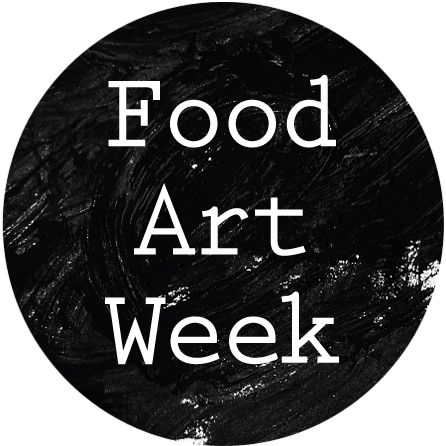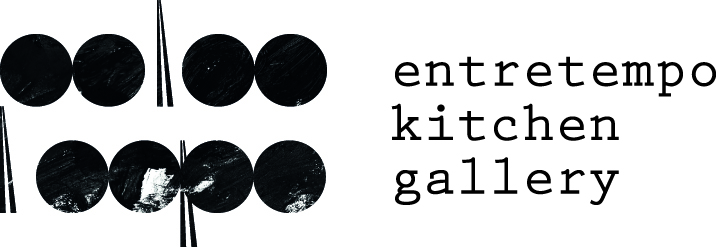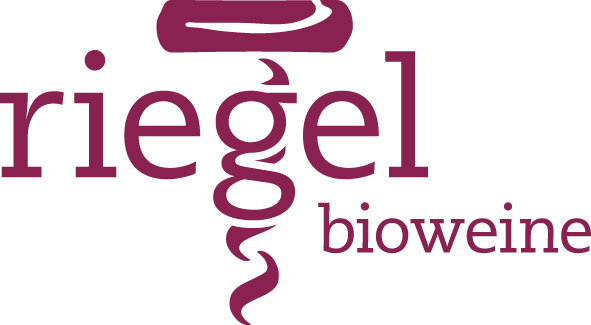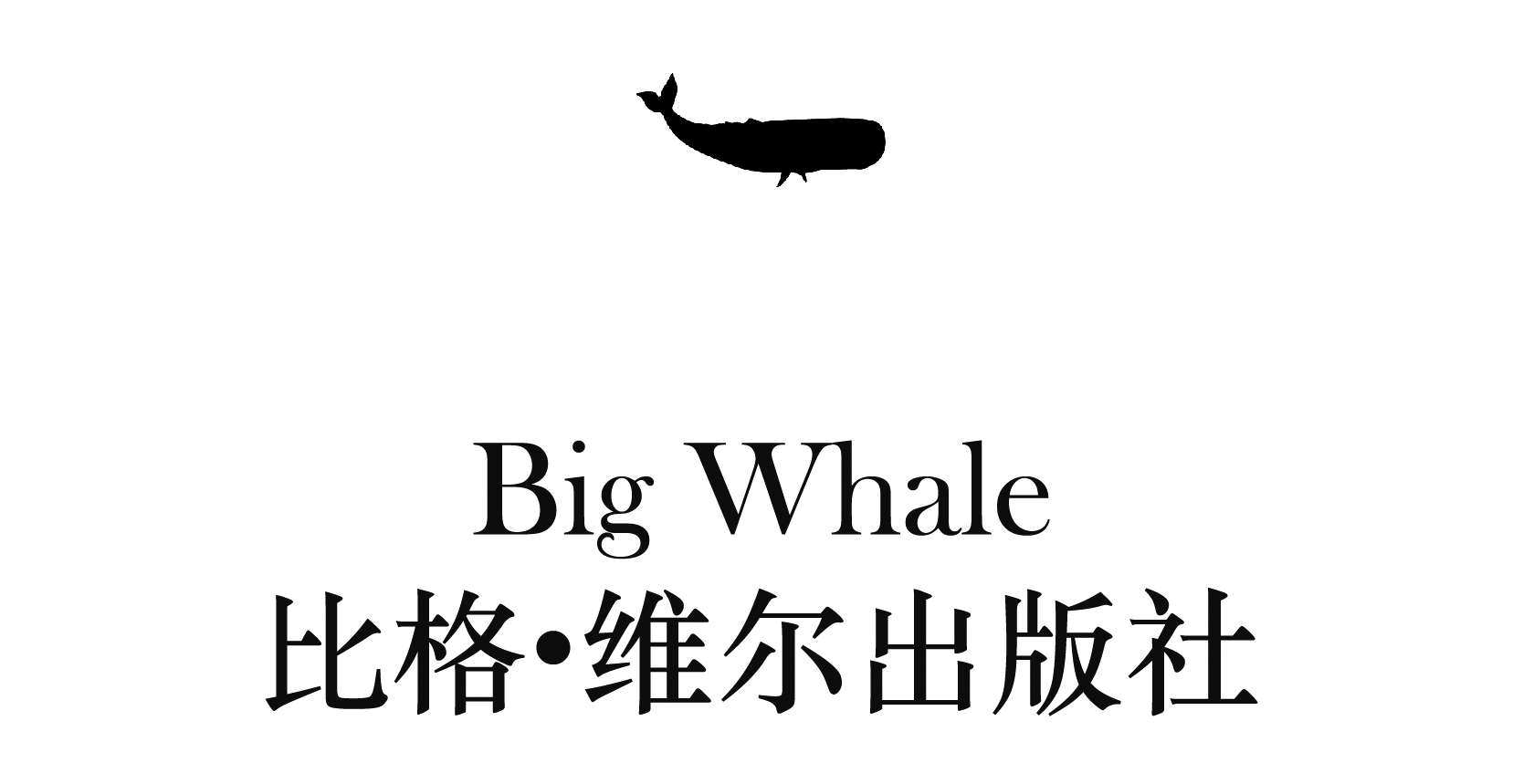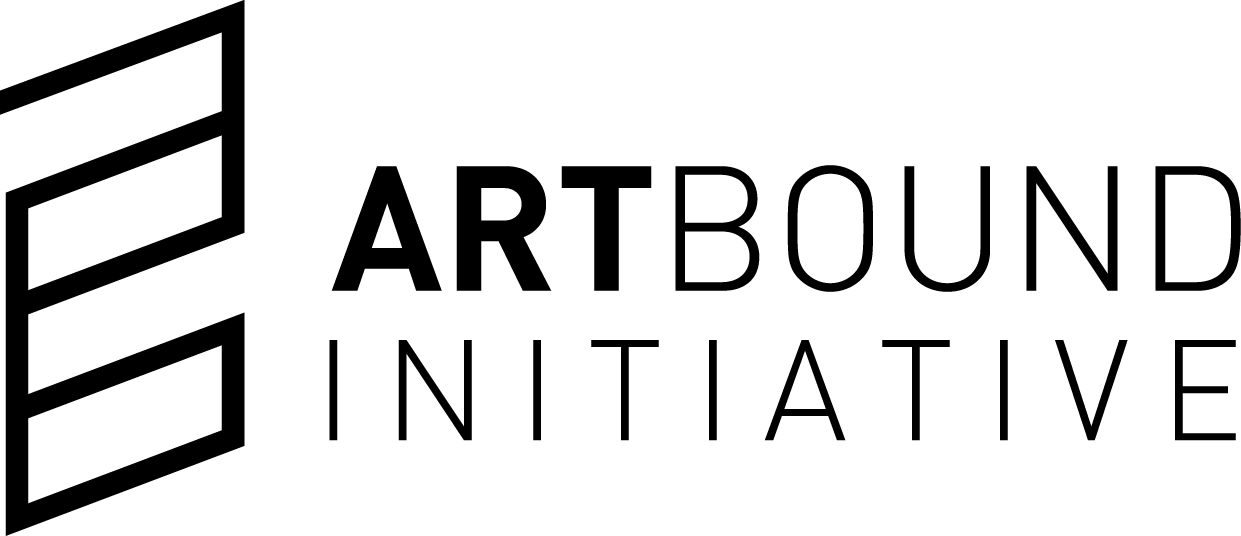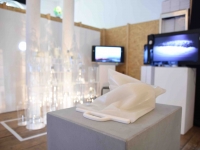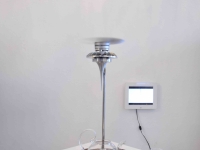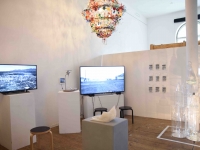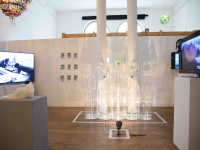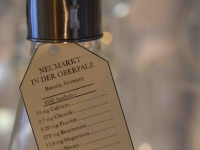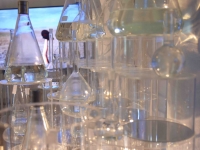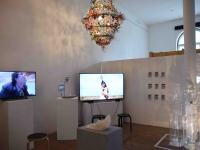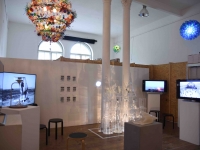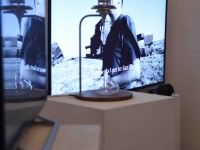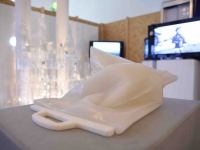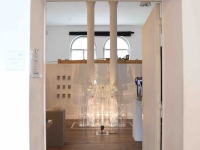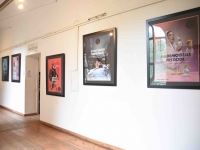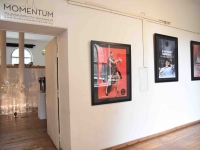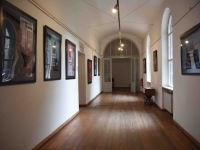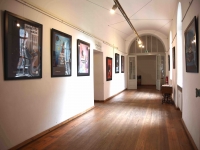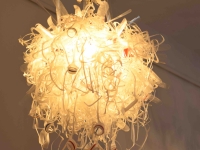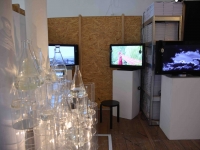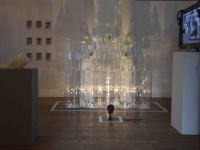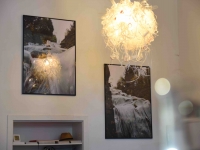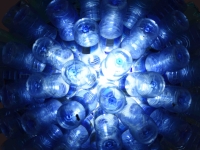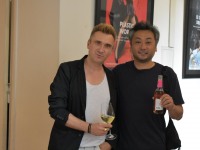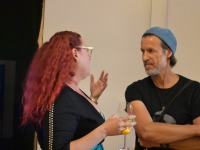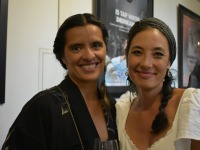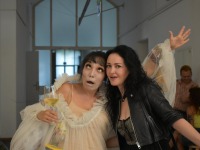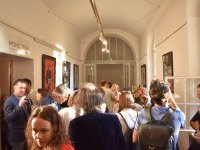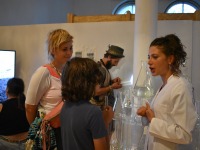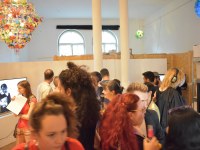WATER(PROOF)
Exhibition for Food Art Week 2019: Water
Shaarbek Amankul // Andreas Blank // Stefano Cagol // Nezaket Ekici // Yuya Fujinami // Giovanni Giorgi + Nuha Saegh + Nuwella // Iara Guedes + Tereza Guedes // Tainá Guedes // HALEKE Collective (Aki Nakamura, Anastasia Putsykina, Sugano Matsusaki) // Bonnie Tchien Hwen-Ying // Shaakira Jassat // Joanna Keler // Klara Kirsch // Janet Laurence // Gabriela Lesmes // Magpie Art Collective // Shahar Marcus // Almagul Menlibayeva // India Rose Klap // Nina E. Schönefeld // Lotti Seebeck // Shingo Yoshida
Curated by Rachel Rits-Volloch & Tainá Guedes
OPENING:
10 August 2019 @ 6:00 – 10:00pm
EXHIBITION:
11 August – 15 September 2019
@ MOMENTUM
Kunstquartier Bethanein
Mariannenplatz 2, Berlin 10997
Performance Program and FAW Festival:
17 August 2019
@ Steinplatz
10623 Berlin
 |
Food Art Week 2019: Water campaign by Almagul Menlibayeva
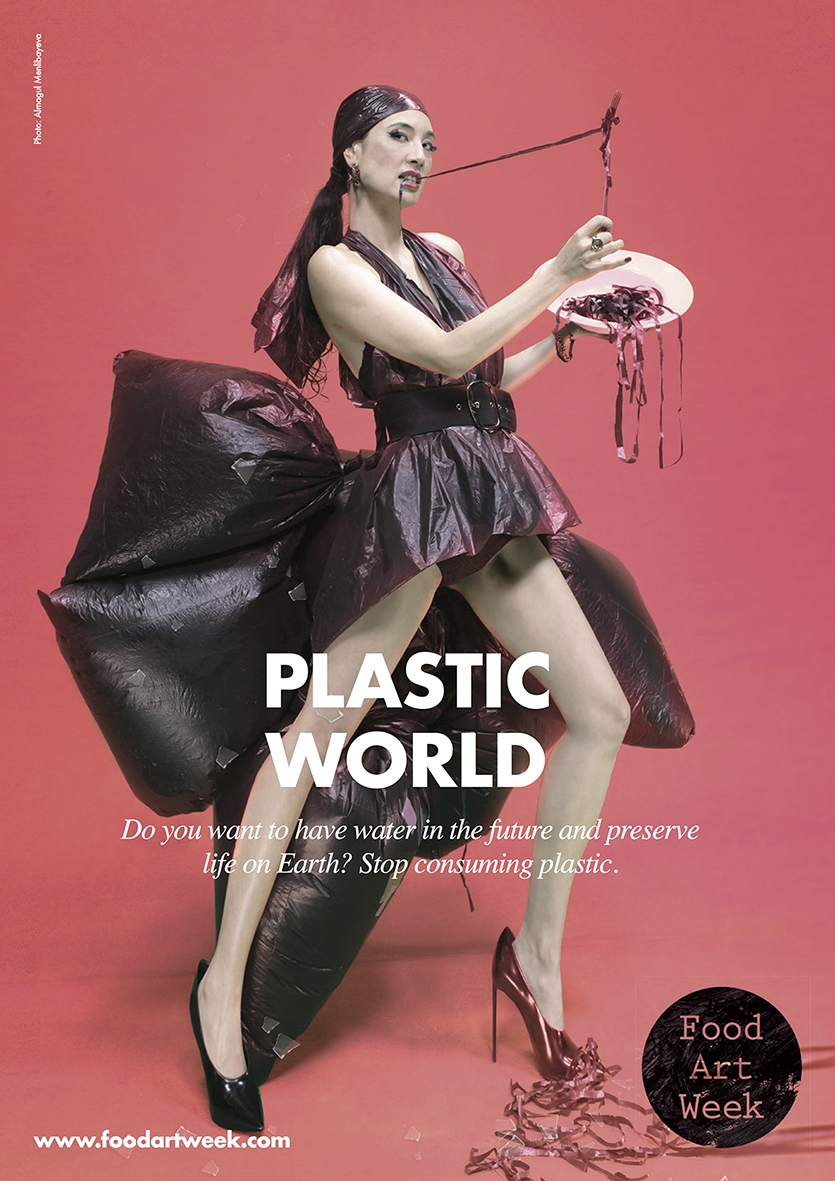
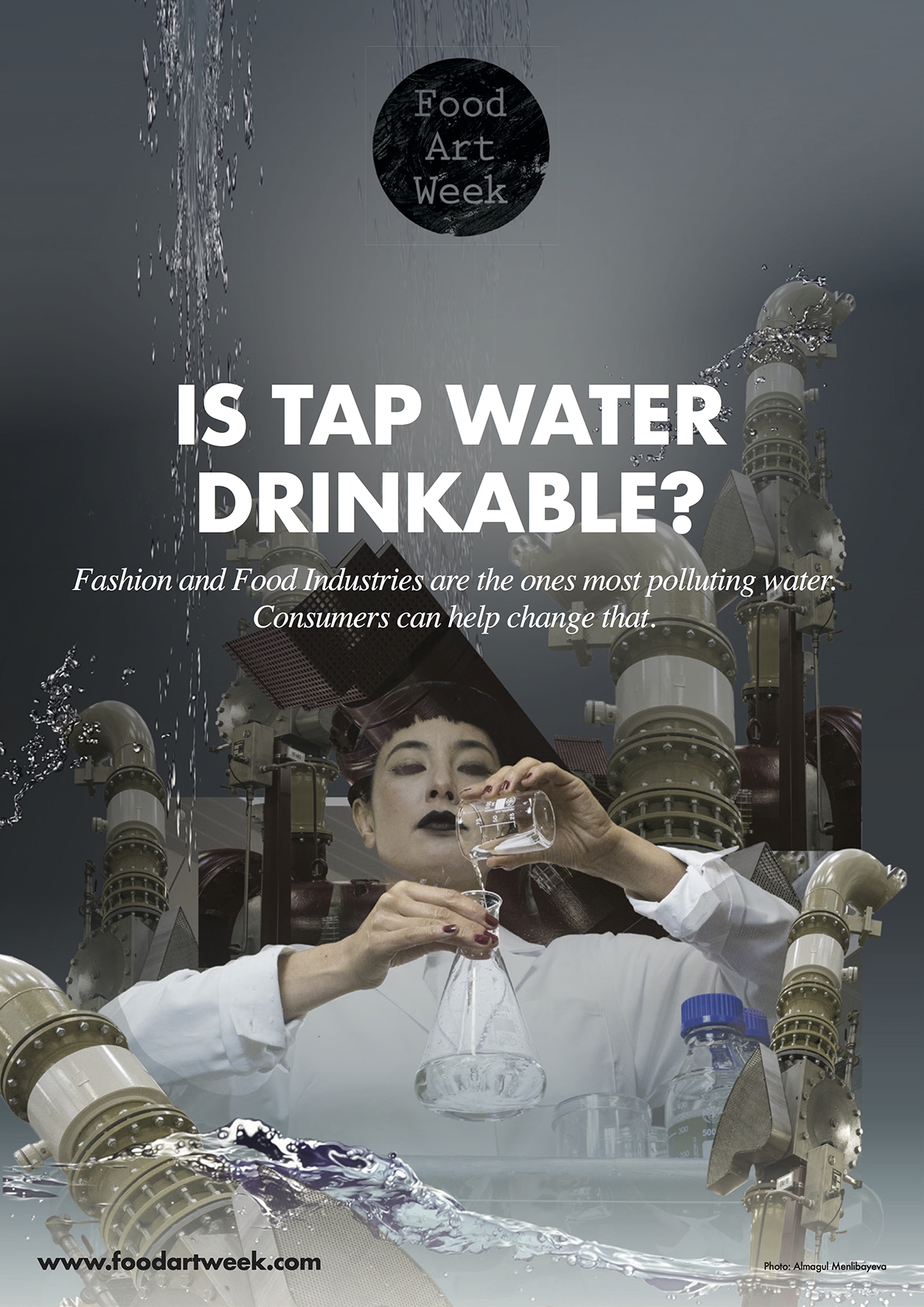
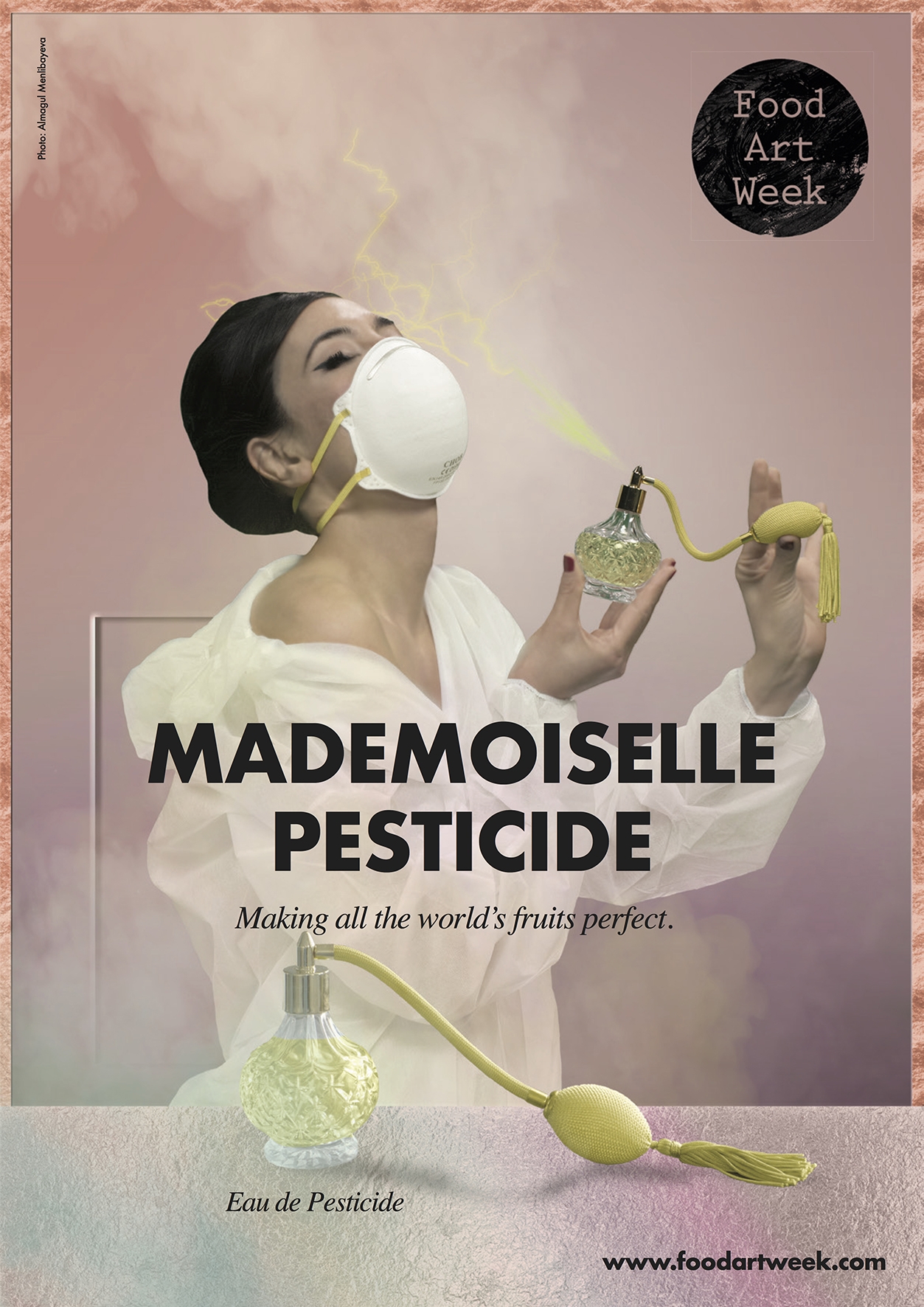
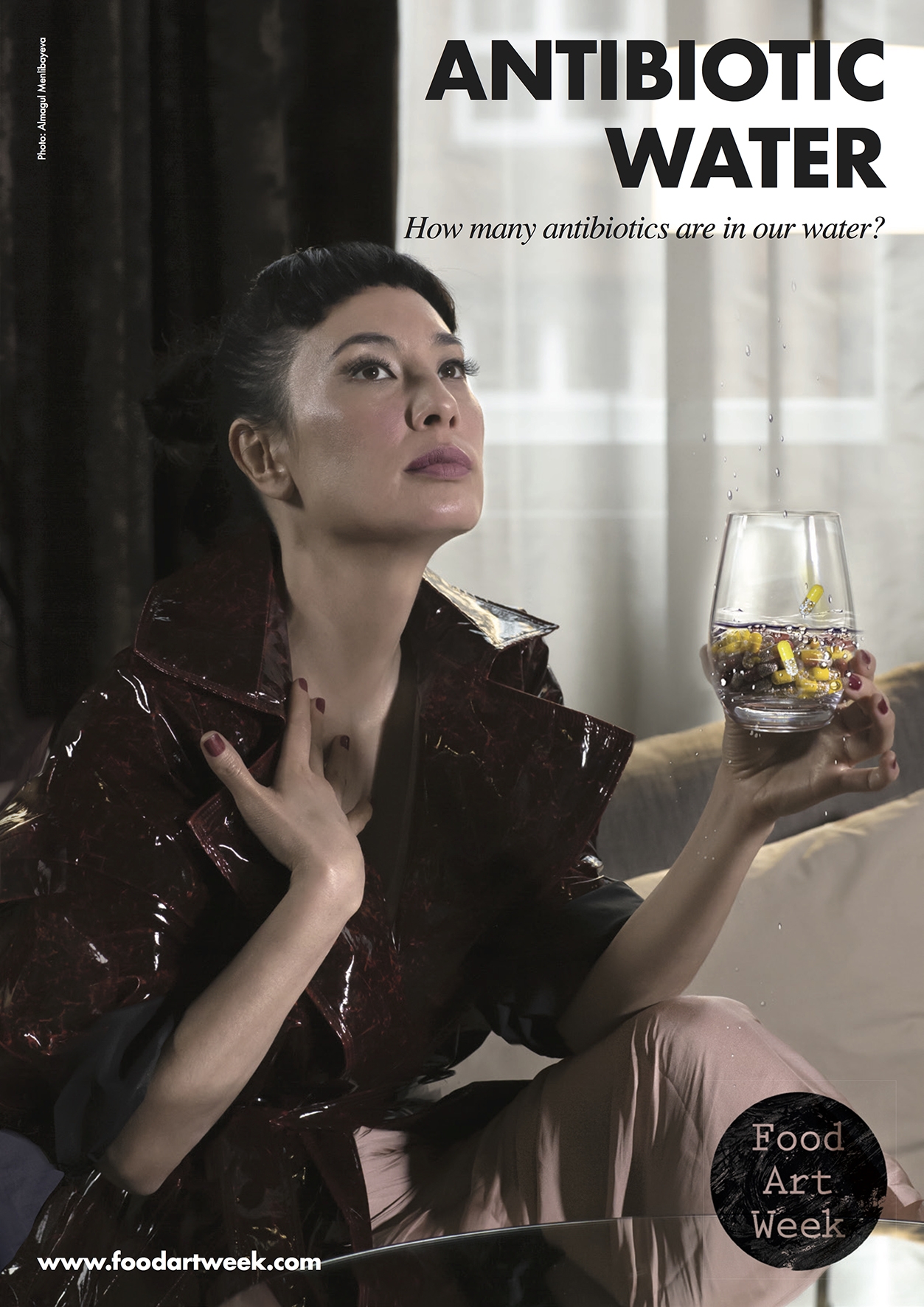
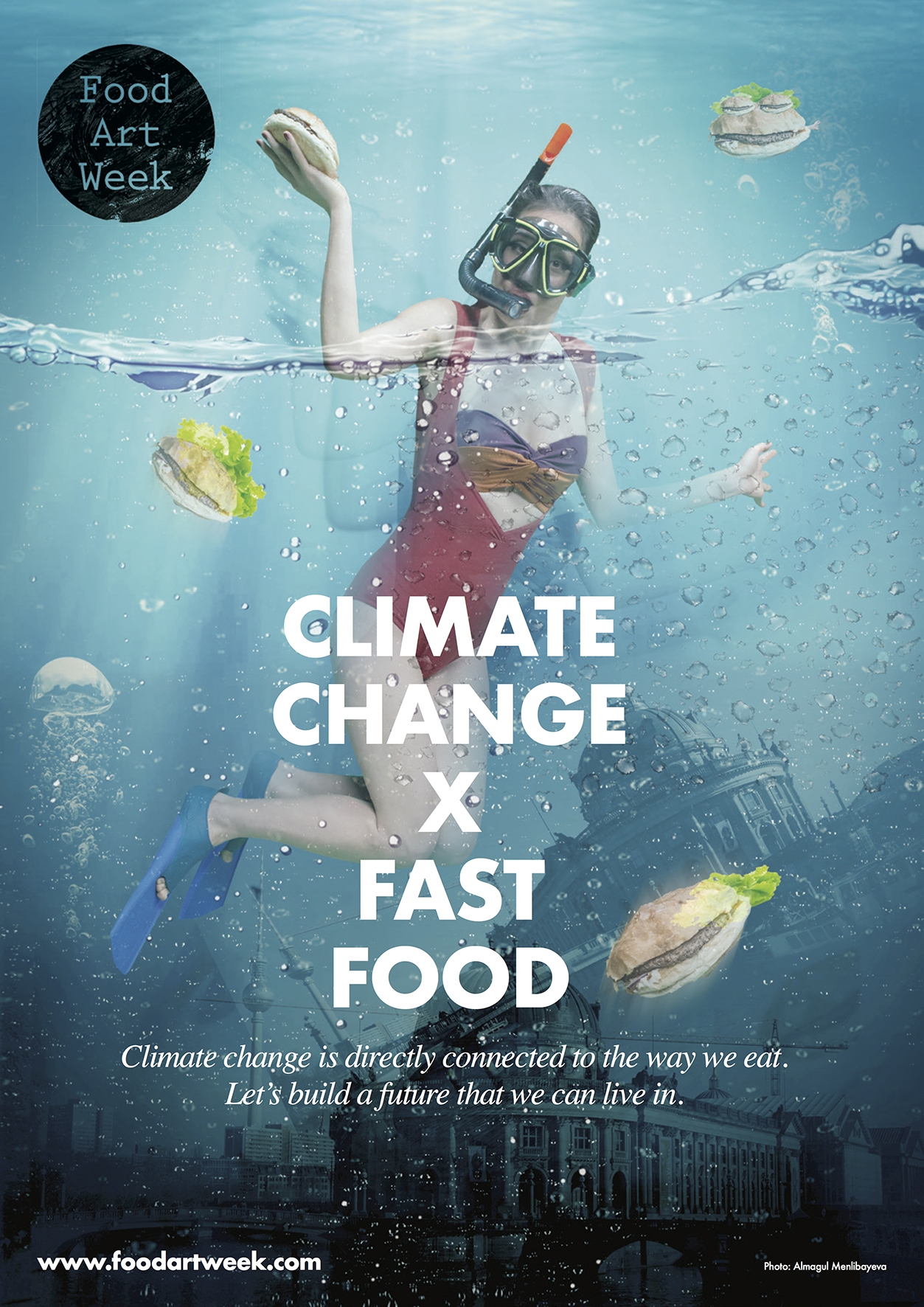
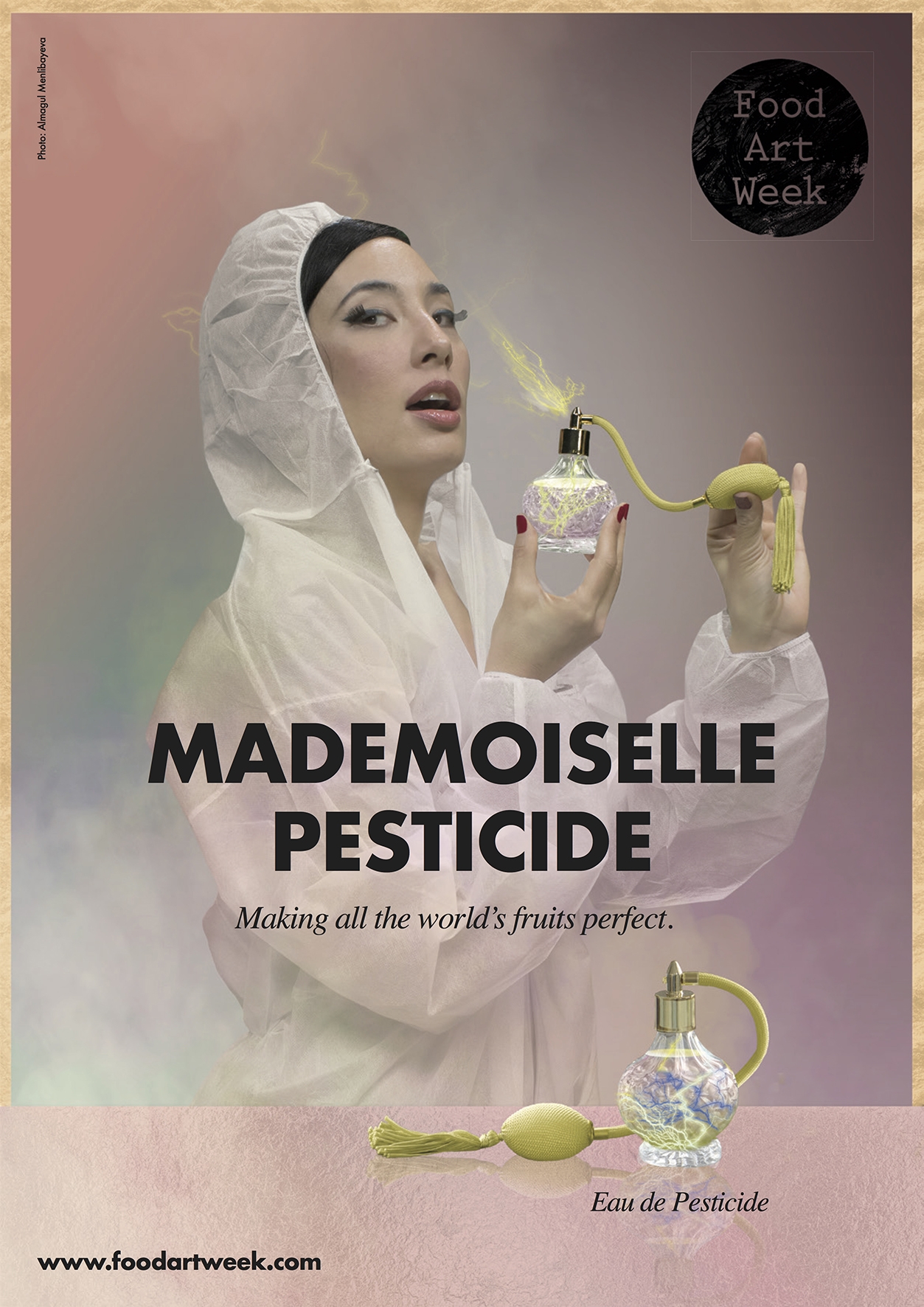
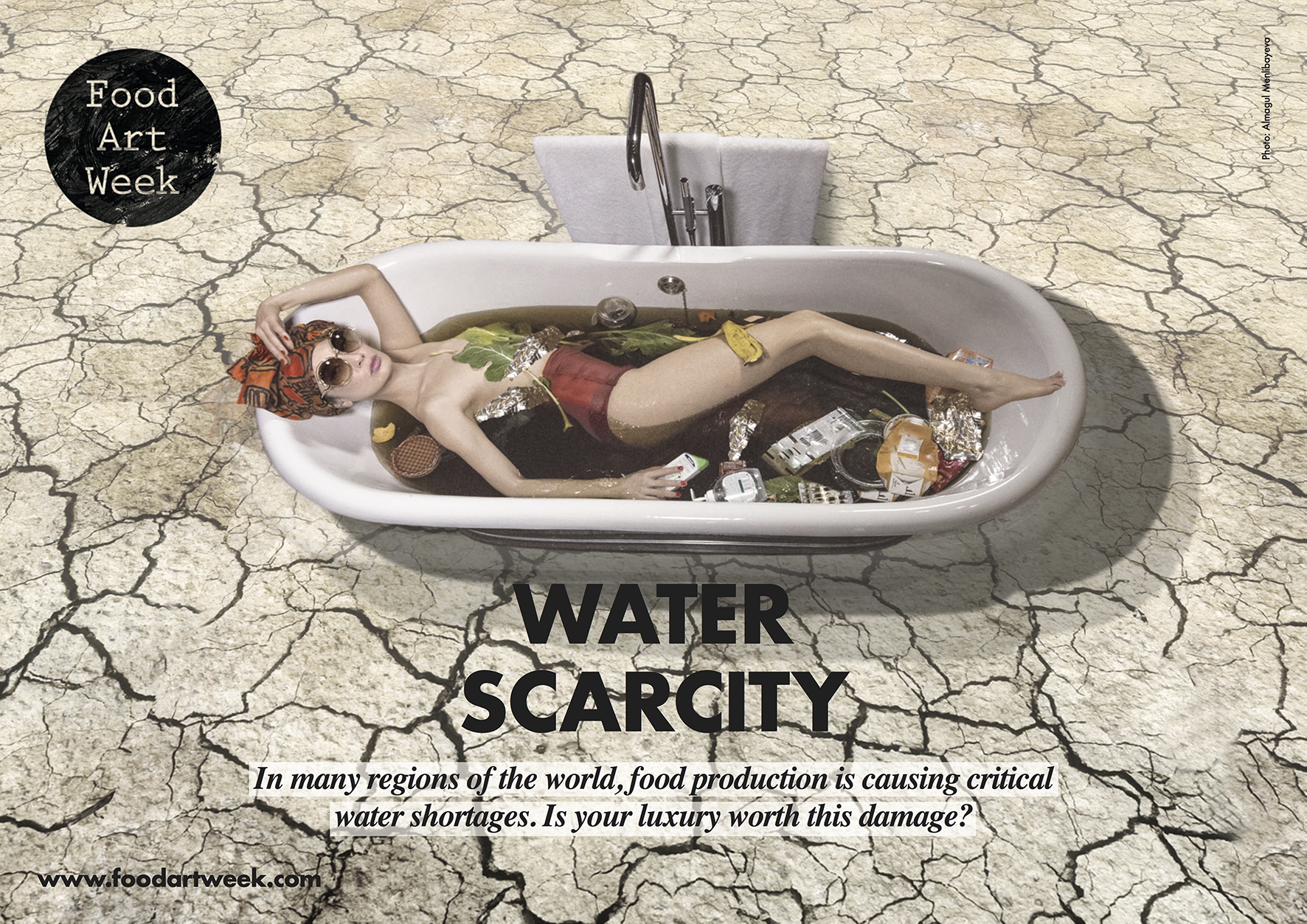
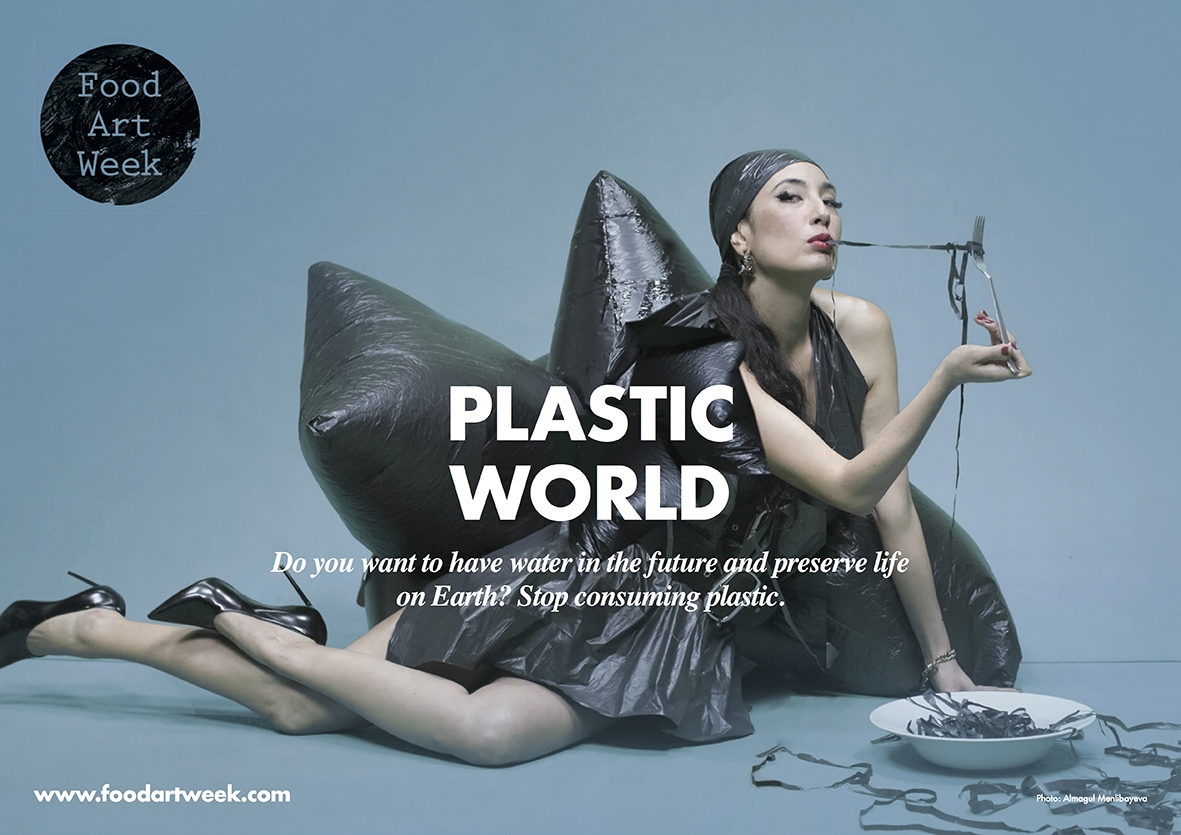
Food Art Week, created by artist/chef Tainá Guedes in 2015, is a non-profit project, whose mission is to promote positive change in our environment and society by asking how ‘what we eat and how we eat it’ is irrevocably affecting our environment. With a new thematic focus each year, the topic of Food Art Week 2019 is WATER. Life on our planet started in the water. Like our planet, we ourselves are 70% water. Yet many living beings have no access to clean water. Plastic pollution, nanoparticles, pesticides and antibiotics are damaging our freshwater and oceans. Only 2% of the total water on our planet is clean.
To address these issues, WATER(PROOF), MOMENTUM’S exhibition for Food Art Week 2019: WATER, brings together renowned international and Berlin-based artists and specially commissioned performance programs by students of Mathilde ter Heijne’s class at Berlin’s University of the Arts (UdK) and students in the Master of Gastronomy: Creativity, Ecology, and Education program at the University of Gastronomic Sciences (Pollenzo, Italy). With works installed in the exhibition at MOMENTUM, along with a performance program at the FAW Festival in Steinplatz, in this breadth of artistic perspectives, through video, installation, performance, photography, and design, we engage in a broader international dialogue on the deterioration of our environment.
Shown at MOMENTUM, Shaarbek Amankul’s video New Society, documents the devastating ironies of economic privation in his native Kyrgystan, where poor villagers drain the contents of water bottles into the arid earth, preferring the quick cash from recycling to the water itself. Environmental artist Janet Laurence addresses the fragility of water as a vital resource through her installation H2O: Water Bar, activated during the exhibition opening by a water-tasting performance. Stefano Cagol’s video performance amidst the ice of the Arctic Circle, Evoke, Provoke [the border], raises issues of mankind’s unrelenting impact upon even the harshest of environments. Almagul Menlibayeva’s photo series illustrates this year’s Food Art Week, while her film, Transoxiana Dreams, documents the desertification of the Aral Sea, poetically following the plight of fishermen who now have to drive for hours from their village to reach the rapidly shrinking sea. Nezaket Ekici and Shahar Marcus’s video performance Salt Dinner is set within another shrinking sea, Israel’s Dead Sea. What looks like an absurd aquatic picnic is in truth a brutal endurance test for both artists; the excess of salt they are consuming with the sea water being as lethally dehydrating as the midday sun. Nina E. Schönefeld’s video Dark Waters takes place in another poison sea. Set in a dystopian future where the oceans are poisoned with plastic and only jelly fish can survive in their waters, this film sadly bears more resemblance to truth than science fiction.
The River is Never the Same River, Iara and Tereza Guede’s butoh-inspired performance for the opening of the exhibition, enacts through the language of movement the plight of such polluted waterways. Shingo Yoshida’s video Réprouvé is striking for its very absence of water; turning a garbage strewn wasteland in Chile into a beautiful sound installation, it is nevertheless a frightening glimpse of what our planet may soon look like if we do not take better care of it, and if we do not curb overproduction of waste. The plastics clogging such landscapes the world over are repurposed into beautiful light objects by South African artists Magpie Art Collective, and are mirrored in Imitation, the simulated waterfall created by Joanna Keler, where plastic flows across a rocky streambed. In another artful imitation, Andreas Blank fashions out of quartz a perfect replica of a plastic bag. In Landscape Metaphor II, Blank highlights the enduring impact on our environment of the litter we disregard too easily: by virtue of being carved in stone, these apparently ephemeral objects achieve monumental permanence. India Rose Klap has also created a plastic bag, only hers provides a solution to the plastics filling our oceans and landfills: Klap’s plastic bags are edible. Giving us all food for thought, her bags are served during the opening of the exhibition in a Plastic Soup. Shaakira Jaasat’s Tea Drop also posits a solution to a future of impending water shortages: she has created a device to condense water vapor out of the surrounding atmosphere. Jaasat’s tea machine is as beautiful in its impracticability as Nezaket Ekici’s Water To Water, the documentation of her performance at Berlin’s Haus Am Waldsee, where over the course of several laborious hours she manually filters five pitchers of lake water, drunk with varying degrees of reluctance by her audience.
These and the other outstanding works situated in Steinplatz for Food Art Week may be only tangentially about food, and yet each work illustrates in its own way the vast diversity in which water impacts upon the cycle of life on our planet. From the desertification of climate change to the predicted floods of melting glaciers, water is as deadly in its scarcity as it is in excess. And yet, life cannot exist without it. WATER(PROOF) is about such paradoxes. In our utter dependence on water, we nevertheless contrive to poison and squander it. Nothing is waterproof, in the sense of being impervious to water, when water is perceived as integral to most every industry which sustains our lifestyles and quality of life. Yet our lifestyles are poisoning our planet. WATER(PROOF) assembles the positions and experiences of over twenty international artists, each proving, in their own way, the precarious paradoxes of the cycles of water consumption and production, integrally linked to what we eat and how we eat it.
FOOD ART WEEK CONCEPT:
The topic of Food Art Week 2019 is WATER.
Life on our planet started in the water. We, ourselves are 70% water, like our planet. Yet our oceans suffocate, our rivers are polluted, many living beings have no access to clean water. Plastic pollution, nanoparticles, pesticides and antibiotics are damaging our freshwater and oceans. Only 2% of the total water on our planet is clean.
By 2025, half of the world’s population will be living in water-stressed areas. Industrialized livestock farming is draining and polluting water, threatening our planet’s most precious resource. Globally, 29% of the water footprint for agricultural production goes to raising animals. 98% of that water is to grow their feed.
Water scarcity is a critical challenge to the future of sustainable food production. Since the water footprint for beef is six times larger than for pulses, our meat consumption is throwing the planet off-balance.
We want to address with the selected artists and venues, different artistic perspectives – informative, narrative, empathetic, surprising and more.
The events will gather together famous, as well as young and upcoming artists. For the entire month the visitors will have the opportunity to discover the intersection between the wide panorama of modern and contemporary art and the increasingly popular (healthy) food culture in the selected cities. Through performances, dining events and exhibitions the festival will aim to present how food can be the medium of artworks and how it can open a dialog between thoughts and emotions. Food Art Week focuses on discovering the different connections between art and food by exploring the worlds of design, photography, collage, performance, food experiences and books related to this topic.
In addition to the exhibition at Momentum Worldwide, Food Art Week is occupying Steinplatz, a public space in Berlin across from the University of the Arts (UdK), for the whole month of August, with greenhouses designed by Tainá Guedes, one in collaboration with BSR and the other with the Bio Water Rheinsberger Preussenquelle, that will host educational art installations on the subject of the festival. On Saturday 17th of August, there will be curated art performances, workshops for kids and adults lead by NGO restlos glücklich, a panel discussion, and info booths from environmental organisations working on water preservation.
Food Art Week Berlin this year takes place in August in collaboration with MOMENTUM, UdK, Programm der Kulturagenten für Kreative Schule Berlin, Berliner Stadtreinigung (BSR), Rheinsberger Preussenquelle and Stabstelle Bildung für nachhaltige Entwicklung und internationale Projekte Bezirksamt Charlottenburg- Wilmersdorf von Berlin.
Food Art Week, created by artist Tainá Guedes in 2015, is a non-profit project, whose mission is to promote positive change in our environment and society by raising awareness about many important topics related to our eating habits. It is the first contemporary art and food festival focused on educating people through various activities which includes exhibitions, workshops, panel discussions, talks, performances and film screenings. It has been held in various cities since 2015, including Berlin (2015, 2017), Bologna (2017), Paris (2016, 2018) and Mexico City (2018).
With a special focus on sustainability, animals and human rights, and environmental-social-economic issues, the festival analyses this year’s theme “water” and how the production and consumption of our food is affecting this essential natural resource.
Program for Food Art Week Festival
17 August 2019 @ Steinplatz, Berlin Charlottenburg:
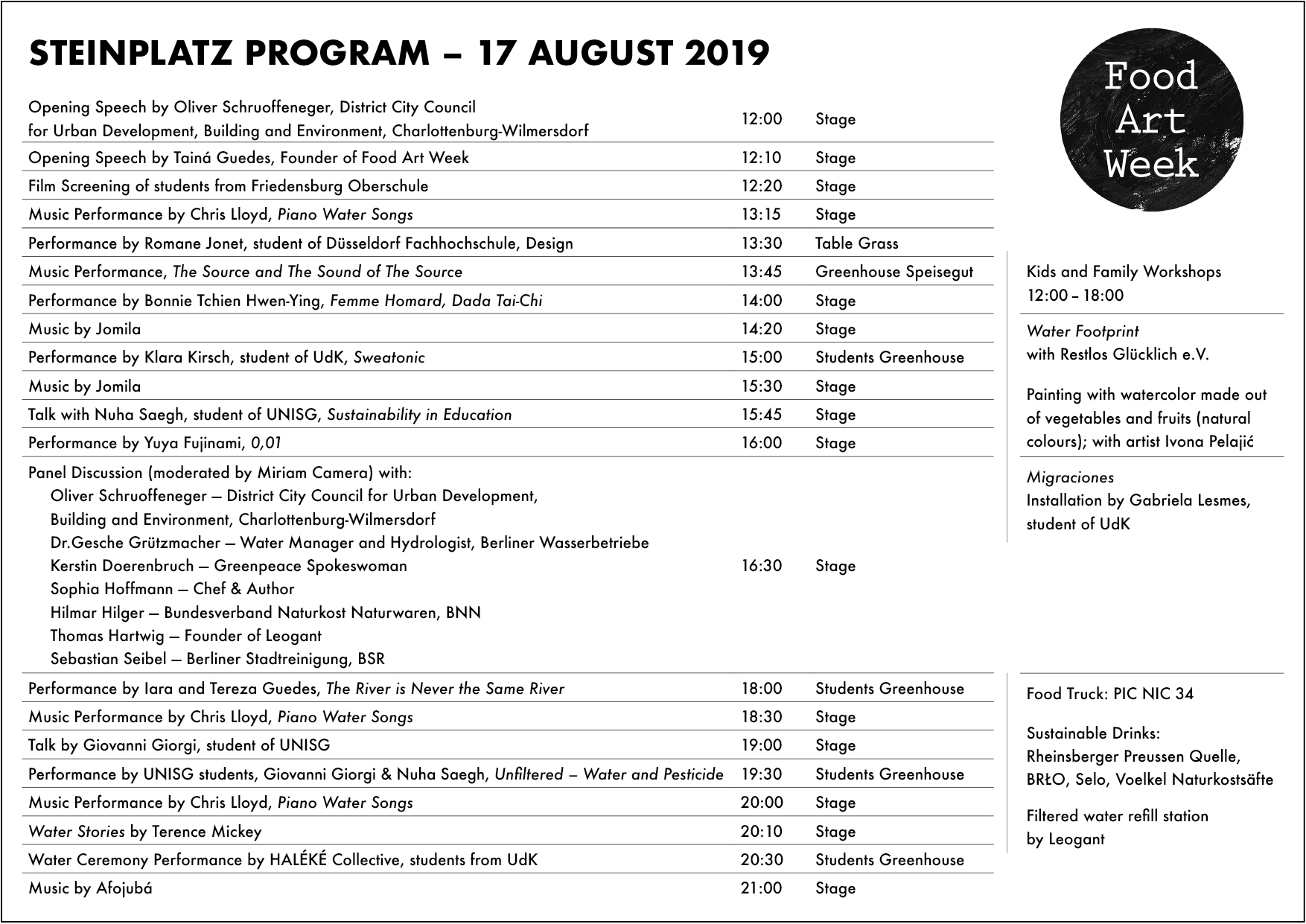
ARTISTS
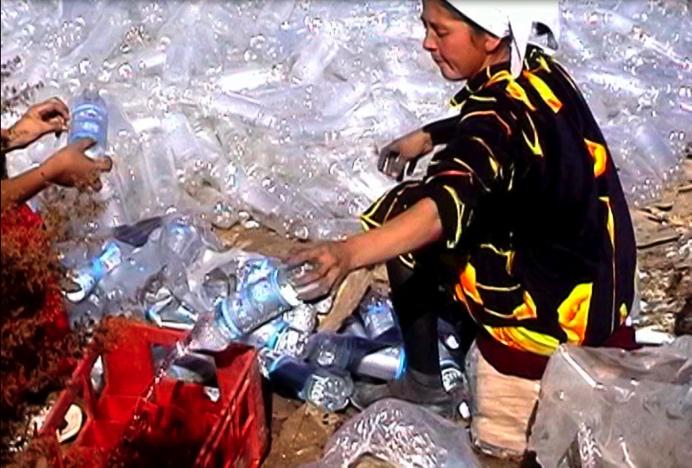
New Society
2017, digital video, 2’40” (long version 7′)
The video New Society shows poor villagers on the outskirts of the Kyrgyz capital, Bishkek, emptying aid packages of bottled water onto the arid ground so they can recycle the plastic for cash. The devastating irony by which the normally environmentally sound practice of recycling results in the wastage of water is a reflection upon the economic privation and shortsightedness wherein a population comes to prefer the quick cash from recycling to the water itself. This twisted take on the water economy is devoted to the search for social identity on the part of thousands of residents of the suburbs of Bishkek, (the so called “circle of self-builders”). This work looks at the population who left their villages after the collapse of the Soviet Union, only to remain marginalized to this day by the city infrastructure through unemployment and poverty.
Shaarbek Amankul – BIO
Shaarbek Amankul (b. 1959 in Bishkek, Kyrgystan, lives and works in Bishkek) is one of the leading artists and curators driving the emergence of Central Asian contemporary art. In his art practice he has shown work throughout Europe, Central, Asia, and the US. Through his curatorial practice, he strives to build a dialogue with other artists and audiences by organizing international artist retreats and exhibitions in Europe and in his native Kyrgyzstan. Since 2011, he has been running the Nomadic Art Camp, an annual international platform for young artists, providing much needed opportunities for artists from the region. Amankul is also the founder and director of the B’Art Art Center in Kyrgyzstan, which he founded in 2006.
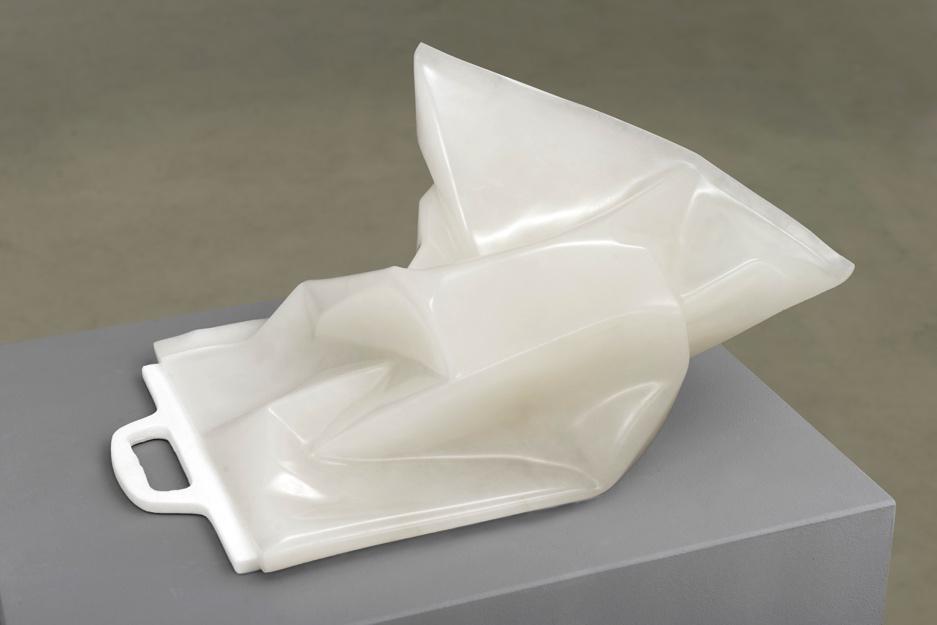
Landscape Metaphor II
2014, sculpture, quartz
German artist Andreas Blank is a sculptor working exclusively with stone. He is conscious of his chosen medium as a material reflecting the very substance of time; in its strata are recorded the ages of the planet. In Landsape Metaphor II (2010) Andreas Blank fashions out of quartz a perfect replica of a plastic bag, turning his art to sculpting the detritus of our planet. In so doing, Blank creates an ideal metaphor for the enduring impact on our environment of the litter we consider so ephemeral. In his sculptural practice, Andreas Blank combines the abstract and the realistic, the conceptual as well as the technical. He sources stones from quarries from all over the world, carves them with elaborate deliberation and assembles them into deceptively realistic objects of the everyday. Only upon close inspection one discovers that light bulbs, transport boxes and plastic bags are made of marble, alabaster or sandstone. The gravity of stone, in Blank’s work, acquires the seemingly casual character of the mundane and wasteful. And yet by virtue of being carved in stone, these apparently ephemeral objects achieve monumental permanence. The first in his series of plastic bag scultpures, Landsape Metaphor, is in the Collection of the Ministry of the Environment, Berlin.
Andreas Blank – BIO
Andreas Blank was born in Ansbach in 1976. He attended the Karlsruhe State Academy of Art (Staatliche Akademie der Bildenden Künste) and was Meisterschüler under Prof. Klingelhöller. He held a scholarship with the German National Academic Foundation and received his MFA from the Royal College of Art in London. In 2009 he was a finalist for the New Sensations Award by Channel 4 and the Saatchi Gallery. He lives and works in Berlin.
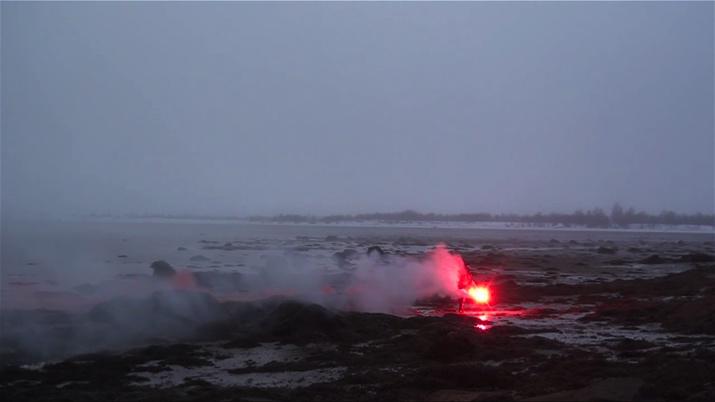
Evoke Provoke [the border]
2011, HD video, 12’30”
The impact which mankind has upon the natural environment is at the root of this work created at Kirkenes, in the Norwegian Arctic Circle, during one of the periods Cagol spent abroad as an artist-in-residence. Cagol staged a series of emblematic actions that he filmed with a video camera, in total solitude, immersed in a fascinating but hostile natural environment, in extreme climactic conditions. The setting seems to be cloaked in twilight, barely dispelling the darkness, and the temperature is 25 degrees below zero. In those frozen lands, Cagol tries to communicate in one way or another, using different forms of signaling. He endeavours to modify the landscape, to light it up, to melt the snow with a flame, but every attempt at interaction with this harsh environment is in vain. The irony here is not lost. While one man cannot make a visible impact upon this frozen landscape, the impact of mankind as a whole is all too devastating. For Cagol in this case the border is precisely the one between himself, his body and his mind, the extreme nature that surrounds him, and the impact which mankind has upon this natural environment. Evoke Provoke (The Border) was shown at the solo exhibition Concilio in the church of San Gallo, as a collateral event at the 54th Venice Biennale, and is held in the MOMENTUM Collection.
Stefano Cagol (b. 1969 in Trento, Italy) received a post-doctoral fellowship at the Ryerson University in Toronto, Canada, after having graduated from the Accademia di Brera in Milan. He participated in Manifesta 11 and Manifesta 7; at the 55th Venice Biennale, invited by the Maldives Pavilion; at the 54th Venice Biennale with a solo collateral event; and at the 1st Singapore Biennale. In 2017 a still from Evoke Provoke [the border] becomes part of the Collection of the German Ministry of Environment (Sammlung Bundesministerium für Umwelt, Deutschland), and he is part of the grand inaugural exhibition curated by Veit Loers at Haus Mödrath – Räume für Kunst in Cologne. In 2014-2015 his solo project “The Body of Energy (of the mind)” was presented at a series of European museums, such as the MAXXI Museum in Rome, Madre Museum in Naples, Maga Museum in Gallarate, Museion in Bolzano, Kunsthalle St. Gallen, ZKM in Karlsruhe, Museum Folkwang in Essen, Landmark / Bergen Kunsthall. Among grants and awards he won the Visit prize of Innogy Foundation in 2014 (Germany) and the Terna Prize for Contemporary Art in 2009 (Italy). He has been selected for many artist in residence programs including: Ruhr Residence 2016; Cambridge Sustainability Residency 2016; Air Bergen; BAR International in Kirkenes; International Studio and Curatorial Program ISCP in New York; ICP-International Center of Photography in New York. Stefano Cagol Lives and works in Trento.

Water To Water
2015, video documentation of live performance
Having participated in FAW2017, we are proud to invite Nezaket Ekici back to Water(Proof) for FAW2019 with documentation of her performance Water To Water (2015), and her video performance together with Israeli performance artist and filmmaker Shahar Marcus, Salt Dinner (2012).
In her performance Water To Water (2015), commissioned for her solo exhibition at Berlin’s Haus am Waldsee, Nezaket Ekici transforms the dirty water of the lake into drinkable water which her assistants offer to the spectators. With a performance practice indebted in equal measure to the visual opulence of the theatrical and the physical excesses of the durational, Ekici here embodies the spectacle of our water cycle. Seemingly floating above the lake in a voluminous red gown which also forms her water delivery system, Ekici laboriously pulls water up from the lake, bucket by bucket, and operates a hand-pumped water filter to channel the clean water through her dress into pitchers held by her assistants below. The performance, lasting several hours, results in five pitchers of water, drunk with varying degrees of reluctance by the audience. Ekici embodies through her own labor and sweat a metaphor for the invisible process delivering clean water to our taps. This most essential of resources is what we most often take for granted. Ekici’s performance subtly asks the questions at the back of all our minds: How clean is our water, really? And how much longer will we have clean water on tap?
Nezaket Ekici – BIO
Nezaket Ekici (b. 1970 in Kırşehir, Turkey) studied art pedagogy, art history, and sculpture at Ludwig Maximilian University and the Fine Arts Academy, Munich, and received her MA degree in art pedagogy (1994–2000). Thereafter, she studied performance art with Marina Abramovic at the Hochschule der Bildenden Künste Braunschweig, where she received her BFA and MFA (2001–04). Nezaket Ekici recently participated in the prestigious international Artist Residency Programs of the German Academy in Rome at the Villa Massimo (2016-2017), and the German Foreign Ministry Residency in Tarabia, Istanbul (2015-2016). Recent group exhibitions include: 56th Venice Biennale (2015); Petach Tikva Museum of Art, Israel (2015); The Pleasure of Love, 56th October Salon, Belgrade (2016); The Contemporary Art Gallery of Georgia, Georgia National Museum, Tbilisi (2016); MOCAK, Museum of Contemporary Art, Krakau (2016); Museum Villa Rot, Burgrieden (2016); Tel Aviv Museum (2016/2017); Gabriele Münter Preis, Akademie der Künste, Berlin & Frauenmuseum, Bonn (2017); Oslo Museum (2017); Tiroler Landesmuseum Innsbruck (2018); Sanatorium Istanbul (2018); The Gallery for Israeli Art at the Tivon Memorial Center (2018); Seoul Museum, Seoul (2018); Großen Kunstschau,Worpswede (2018/19); Museum of Islamic Art and Near East Culture Be‘er Sheva (2019). Nezaket Ekici lives and works in Berlin and Stuttgart.
 |
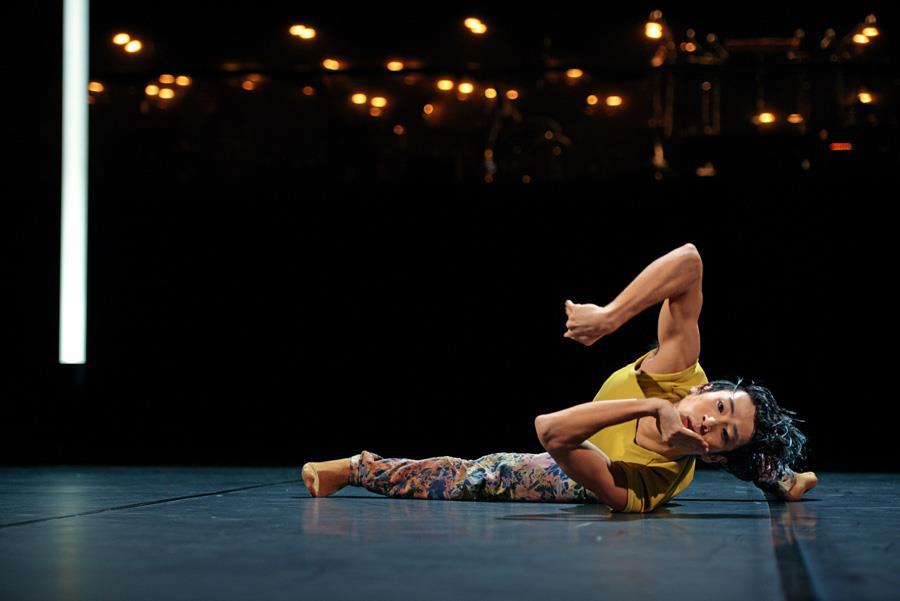
0,01
2019, performance
Over 97% of world’s water supply of water is found in oceans and is too salty for drinking, irrigation, and most industrial and household needs. Of the remaining 3%, approximately 2% is in the form of glaciers and polar ice caps. Most of the rest is found underground, and much of that is too difficult or too expensive to tap. Lakes and rivers, which are the major sources of the world’s drinking water, account for less than 0.01% of Earths’s total water. In his new solo creation for the FAW 2019, Yuya Fujinami explores through his movement the quality of water and environment. Its dynamics, rhythm, shapes and how contaminated elements like plastics have influence on nature. Of the 300 million tons of plastic produced around the world each year.
Yuya Fujinami – BIO
Yuya Fujinami (b. 1988 in Saitama, Japan) began his dance and gymnastics education in Saitama, Japan, and completed his studies at the Hamburg Ballet School of John Neumeier. After graduation he was engaged with several theaters and had the opportunity to work with international choreographers such as Jan Pusch, Roy Assaf, Stephan Thoss, Katrin Hall, and Annabelle Bonney, among others. Since 2015, he has been working as a freelance artist based in Berlin, and has been a frequent collaborator of Constanza Macras/Dorky Park, as well as a performer with Emmanouella Dlianiti, Massimo Gerardi, and various other independent choreographers. His first collaboration with Emmanouella Dlianiti received the audience award for Best Duo in 2017 at the ninth Internationales SoloDuo Festival in Cologne. In 2018, his second collaboration between Emmanouela Dolianiti and the director Hristina Vasic Tomse, led to the duet E T H E R E A L which was co-produced by Constanza Macras/Dorkypark and EX-teater. Yuya Fujinami lives and works in Berlin.
 |

The River is Never the Same River
2019, performance (with Tereza Guedes)
Iara Guedes and her Mother Tereza are Japanese Brazilian multidisciplinary artists. For FAW2019, they present the latest performance in a series begun in 2017 on the theme of the anthropocene: the new geological age wherein the impact of the human being on nature becomes a significant and permanent layer on planet Earth. This series, titled Beyond Narayama Mountain: An Anthropocenophagic Ballad, refers to Japanese director Keisuke Kinoshita’s film about Obasuke’s legendary practice in Japan, where the elders are sacrificed to leave enough resources for younger gnerations to survive. The series reflects on today’s values in relation to the past, present and future; eliding moral judgment, conclusions and explicit discourses with the intention of establishing a delicate interaction between dream and reality.
The River is Never the Same River presents on one side an entity; a hybrid of the spirit of the planet Earth, Pachamama, Mother Nature, Virgin Mary, Shaman. On the other side the spirit of a polluted river. Pachamama blesses the space and audience while the spirit of the river undergoes an exorcism, removing the dirt from within. Though this performance is strongly influenced by Japanese Butoh dance, it is not Butoh. Aesthetically, it takes from Butoh the use of make up to erase the person within the body. And in a more philosophical way, it takes from Butoh the lack of moral judgment, the nothingness and self-annulment. As in Butoh, the performance is not about virtuosity and explicit statements. It suggests signs that can be interpreted symbolically by the audience so they can become viewer-creator.
Iara Guedes – BIO
Iara Guedes (b. 1976 in São Paolo, Brazil) is a Japanese-Lebanese-Brazilian artist, performer and director based in Berlin Germany. As an interdisciplinary artist, experiment is key for Guedes. She examines her own experiences and feelings as a migrant creature to invite her audience and collaborators to constantly shape the moment, the ephemeral state of being present, and to adapt to circumstances of their environment through transformation. Her practice breaks down boundaries between conceptual and theatrical performance, and finds in Japanese Butoh a philosophical and visual component layered by digital animation and effects to build immersive, cathartic, anthropophagic experiences. Using audiovisual elements as poetic layers for a sensorial activation, her work is focused on living forms and that which connects all of us: evolutionary processes, dualities, cycles, repetitions, transformations. Guedes studied dance and performance at the University of Communication and Arts of the Body (PUCSP) from 1999 to 2002. In parallel to her performance and dance studies, she grew interested in animation and its possibilities with performance. Graduating in Digital Cinema from the International Academy of Cinema and Animation at Melies School in 2010, she is dedicated to apprehending the practice of computer graphics and related technologies to create an environment where live performance could be incorporated.
Tereza Guedes – BIO
Tereza Guedes, the daughter of Japanese immigrants, was born in Brazil in 1947. She has degrees in Philosophy and Art from the University of Sao Paulo, having studied with Decio Pignatari, one of the founders of Brazilian Concrete Poetry. She founded Entretempo Studio in 1976. Until the studio closed in the mid-’90s, it was known for its exemplary silkscreen technique and for working with many outstanding artists, including concrete poet Augusto de Campos and visual poets André Vallias and Walter Silveira. Tereza Guedes also managed the artist residency program at Sacatar Foundation in Bahia, Brazil.
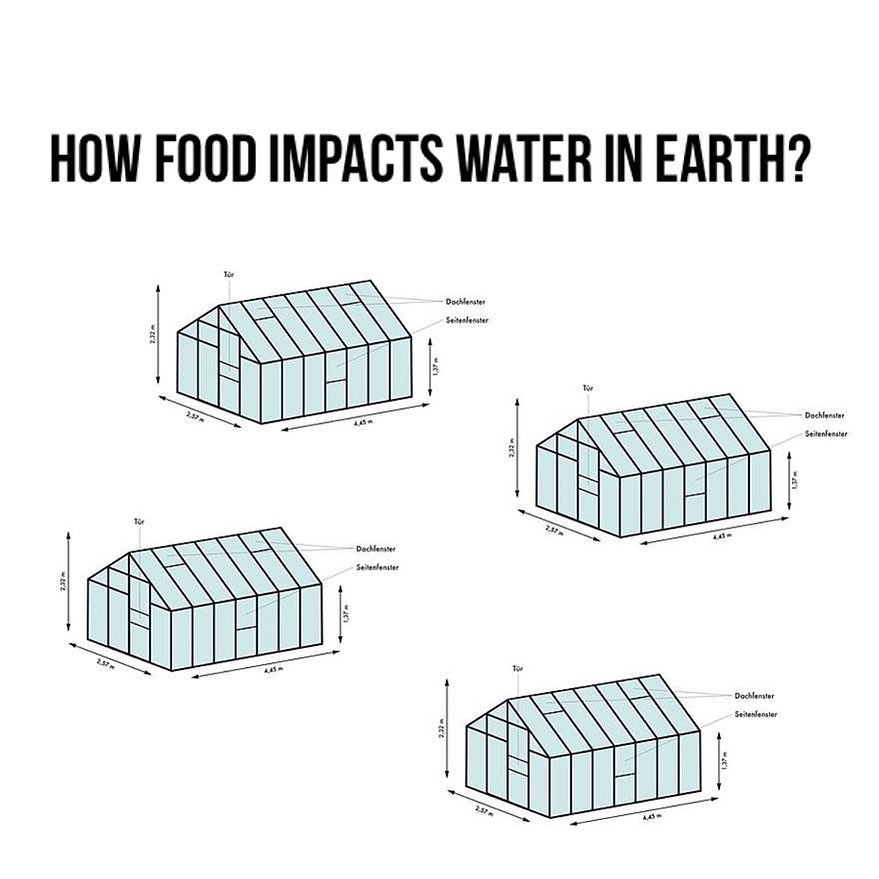
Water Conservation Project (2019), installation
The Water Conservation Project is an installation of four greenhouses in Berlin’s Steinplatz, containing artworks and workshops for the public, on view 1-31 August 2019.
Preserve water. Plant a bottle. Every water bottle contains a message aiming to contribute to the preservation of our planet. Add yours. Please contribute with a sentence, a poem, or an idea on how to preserve water. Every bottle drop counts. Go to: https://www.foodartweek.org/water-conservation-project
Help raise awareness about the importance of each of us contributing to the existence of life on this planet. Answers given by participants will be also available on an online platform, having a national and international reach. The art action will be promoted on the artist’s social media channel, as well Food Art Week and Entretempo Kitchen Gallery.
Leave your message. Leave your poem. Leave your idea on how to preserve water on planet Earth. Your message will be added to the installation:
https://www.foodartweek.org/water-conservation-project
Tainá Guedes – BIO
Tainá Guedes (b. 1978 in São Paolo, Brazil) is a Berlin-based artist, food activist, book author and former cook. Through diverse projects, she works on how we conceive food in a cultural and social context. Art becomes an extension of the kitchen – and food a common base for expressing and sharing thoughts and ideas. Tainá’s work explores the political and social impact of food as a manifestation of history, sociology, geography, science, philosophy and communication. She is the founder of Entretempo Kitchen Gallery and Food Art Week, now in its 5th year.

Femme Homard, Dada Tai-Chi
(2019), performance
For FAW2019, Bonnie Tchien Hwen-Ying is commissioned to create a new performance for Steinplatz. In an homage to Dali, Bonnie Tchien Hwen-Ying sees her performance as “gestures of hope or desperation – a simple cry of survival”. Femme Homard is a work in development since 2016, continuously evolving with each iteration in response to the world’s excesses.
Bonnie Tchien Hwen-Ying – BIO
Throughout her performances, France-based Taiwanese artist Bonnie Tchien Hwen-Ying (b. 1950 in Taipei, Taiwan), conveys her legacies resulting from this two-fold cultural substance. She embraces ancestral Chinese rituals of Tai-Chi, martial arts, and traditional dances, which she conceptualizes and reinterprets in a contemporary fashion. This duality brands the essence of her artistic approach, where revisited costumes and make-up meet with glorified accessories, thus creating her own style and vocabulary to redefine symbolic figures anew. Chinese opera is given a choreographic dance twist and transformed into an utterly dramaturgical act in which the artist, like an alchemist in search of the philosopher’s stone, morphs her body by means of inspired and motivated gestural. Bonnie Tchien Hwen-Ying is the founder of: “The Cabaret of Performance”, 52 rue JB Pigalle, Paris France; the artist residency “Chantons Aux Vaches”, Migné, France; and Founder & Creative “Miss China”, France.
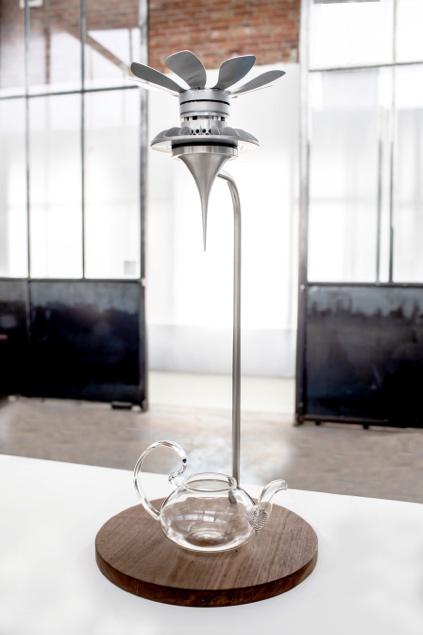
Tea Drop
2019, aluminium, glass, nut wood
As the threat to earth’s natural resources rises exponentially, our ‘available-on-demand’ mentality seeks to be refreshed. Can this initiate an alternative for the way we consume daily resources? Tea Drop is a tea machine, which condenses water vapor from the surrounding humid atmosphere. It functions on its own timeframe, so one has to wait for the tea vessel to be filled up with water, before it can be boiled and ready for making tea. Learning that it takes 30 liters of virtual water to produce one single cup of tea, led me to do field research on tea farms in Asia. There I discovered that water is a by-product of processing tea and harvested tea leaves are dependent on the weather and subject to time. On a symbolic level, Tea Drop aims to recapture this precious resource, whilst giving power back to the environment.
Shaakira Jassat – BIO
After having completed her BSc. In Interior Architecture at the University of Pretoria, Shaakira Jassat (b. 1983 in Johannesburg, South Africa) worked in in that field in Johannesburg for 7 years. In order to expand on her possibilities as a designer, she moved to the Netherlands to study at the Design Academy in Eindhoven in 2013. Shaakira Jassat regards herself as a design researcher and activist. She uses the tools design is able to offer her to express her passion for the way the world functions and how we all behave in it. She believes that design should function as a form of social engagement and that it is up to designers to alter the status quo. Shaakira Jassat lives and works in the Netherlands
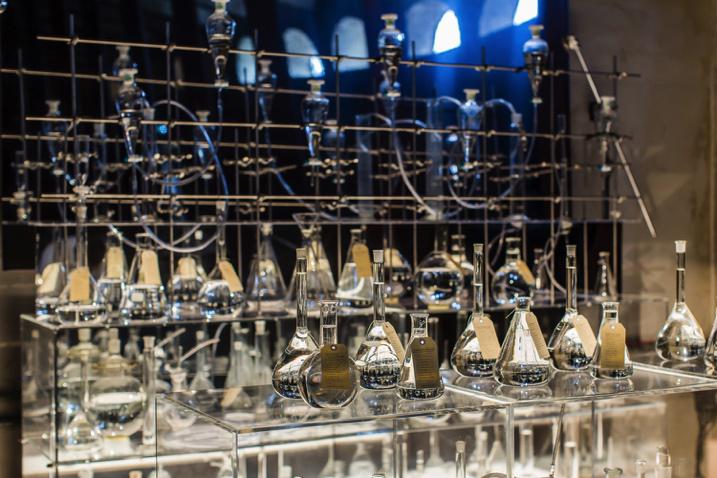
H2O: Water Bar
2016, site specific installation: various rain and spring waters, scientific glass vessels, acrylic containers, mirrors, wood
For FAW2019 we have commissioned a new site-specific version of Janet Laurence’s H2O: Water Bar, realized at MOMENTUM by Leslie Ranzoni. Installed as a glistening laboratory with scientific glass vessels, H2O: Water Bar is a participatory installation, allowing visitors to sample a variety of water sourced from diverse regions of Germany, and to better understand the complexity and fragility of this vital resource. Renowned Australian artist Janet Laurence is known for her work with the environment, often undertaken together with scientists engaged in international conservation initiatives. Laurence’s practice is a direct response to contemporary ecological catastrophes, positioning art within the essential dialogue of environmental politics to create and communicate an understanding of the impact that humans have upon the threatened natural world, in order to restore our vital relationships with it.
Janet Laurence – BIO
Janet Laurence (b. 1947 in Sydney, Australia) is among Australia’s most established artists. In 2015 she was the Australian representative for the COP21/FIAC, Artists 4 Paris Climate Exhibition for the UN Climate Conference in Paris, for which she created Deep Breathing – Resuscitation for the Reef and Coral Collapse Homeopathy, both shown in this exhibition. Further selected recent international projects and exhibitions include: the 57th Biennale of Venice (2017); Veiling Medical Glass, A Medicinal Maze, Novartis Campus, Sydney (2017); The Treelines Track, Bundanon, Australia (2017); GASP: Parliament, Hobart, Tasmania (2017); Inside the Flower, IGA Berlin (2017); Schloss Biesdorf, Centre for Art and Public Space, Berlin (2017); Fellowship at the Hanse-WissenschaftKolleg (HWK), Germany (2016-2017); H2O Water Bar, Paddington Water Reservoir, Sydney (2016); Deep Breathing (Resuscitation for the Reef), Australian Museum, Sydney (2016); Cuenca Bienal, Cuenca, Ecuador (2016); Deep Breathing: Resuscitation for the Reef, Musée National d’Histoire Naturelle, Paris (2015); The Skullbone Experiment: A Paradigm of Art and Nature, Queen Victoria Museum, Tasmania (2014); Animate/Inanimate, TarraWarra Museum of Art, Healsville, Victoria, Australia (2013); 1⁄2 Scene, Australia China Art Foundation Shanghai (2013); SCANZ: 3rd Nature, New Plymouth, New Zealand (2013); After Eden, Sherman Contemporary Art Foundation, Sydney (2012); The Alchemical Garden of Desire, McClelland Gallery, Victoria, Australia (2012). Janet Laurence is a recipient of Rockefeller, Churchill, and Australia Council Fellowships, and the Alumni Award for Arts, University of New South Wales. She was a Trustee of the Art Gallery of New South Wales, a former Board Member of the Visual Arts Board of the Australia Council, and is a Visiting Fellow at the New South Wales University Art and Design. Janet Laurence lives and works in Sydney.
Magpie Art Collective
(Sean Daniel, Ashoka Fellow, Scott B. Hart, Richard Panaino, Shane A. Petzer)
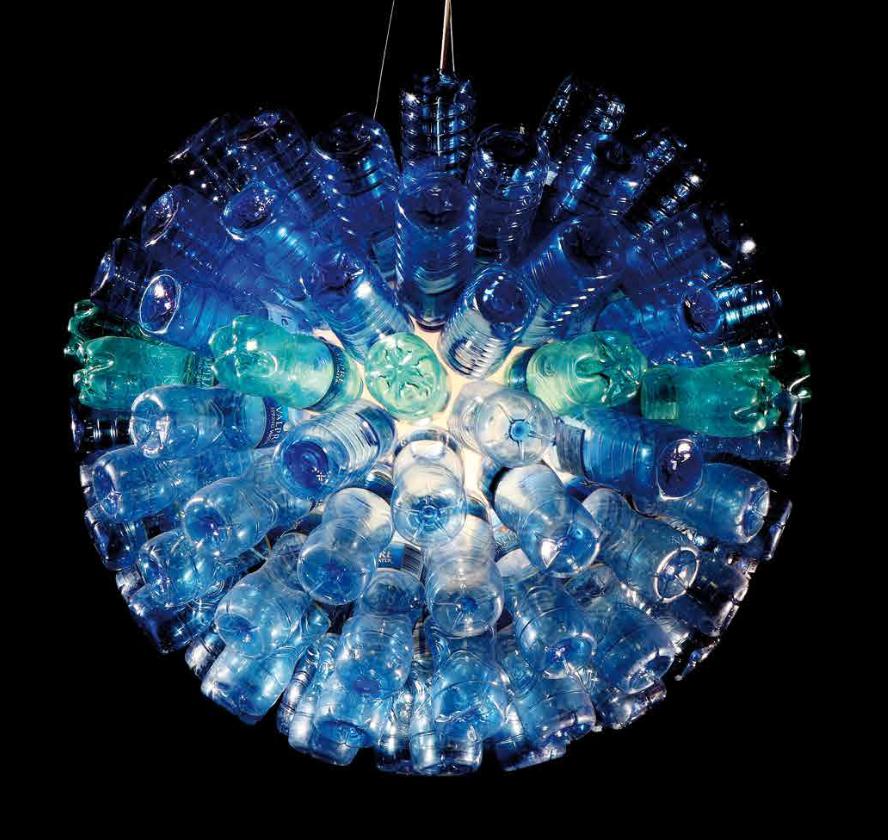
Magpie Art Collective courtesy of Waren Art.
In response to FAW2019’s topic, WATER, a selection of Magpie Art Collective’s light objects will be shown. Made from recycled plastic and water bottles and repurposed plastic packaging, the works selected for this exhibition exemplify Magpie’s aesthetic of using found objects and detritus to create things of beauty out of what we would normally consider trash. The works in this exhibition are shown courtesy of Waren Art.
Magpie Art Collective – BIO
Magpie art collective was established in 1998 by designer Scott B. Hart and social-entrepreneur Ashoka Fellow. Shane A. Petzer, fine artist Sean Daniel, and administrator Richard Panaino joined in 2006 as magpie expanded and the collective relocated from Cape Town to the Barrydale Studio where they are now based. In addition to the studio creations, Magpie undertake commissions and installations as well as participate in exhibitions. Magpie also produces a range of exciting craft-project-linked products with M-Art-Projects. They link themselves with M-Art-Projects to the surrounding community by engagement with local community – income generation projects, crafters and civil society endeavours. The Magpie Art Collective believe the work they do links art and design with meaningful commercial and social entrepreneurism. Their creations are environmentally conscious, produced from a broad range of media and often utilizing found or recycled elements.

Nezaket Ekici & Shahar Marcus Salt Dinner
2012, video performance, 3’19”
Turkish/German artist Nezaket Ekici and Israeli artist Shahar Marcus together address geopolitical and environmental forces through the medium of performance in their video Salt Dinner (2012). Shot in the scorching heat of Israel’s Dead Sea, their performance ironically confronts human endurance with the extremes of nature and culture. In this actual and political hotbed, Muslim and Jew share an opulent feast. Whether a wedding or a wake remains unclear, but what looks like an absurd aquatic picnic is in truth a brutal endurance test for both artists. The excess of salt they are consuming with the sea water is as lethally dehydrating as the midday sun. Shot in a rapidly shrinking ocean in a part of the world fought over for millennia, this international summit offers no solutions for political and environmental stability.
Nezaket Ekici and Shahar Marcus both work separately as artists but started to collaborate on projects in 2012. Their ongoing project In Relation revolves around an exploration of time, space, culture, religion, and the often absurd ways in which people interact with the environment. In this, as a German-based Muslim and an Israeli-based Jew, they collaborate on performances and videos that bridge cultures and religions as well as the long distances between Berlin and Tel Aviv. Focusing on the origin of the latin word relatio (relation), meaning ‘bringing back’, they set out to bring back a knowledge that has been forgotten by most of us: a relation with ourselves and our environment. Since 2012 they have produced ten video works together: Salt Dinner, Sand Clock, Floating Ourselves, Clean Coal, Fossils, Fields of Breath and Lublin Beach, TBQ, all concentrating on the Ancient Greek aphorism γνῶθι σεαυτὸν: know thyself.
Shahar Marcus – BIO
Shahar Marcus (b. 1971 in Petach Tikva, Israel) studied Linguistics and History of Art at the University of Tel Aviv. Marcus primarily works in the medium of performance and video art. His initial works dealt with the exploration of his own body and its limitations- incorporating various perishable materials, such as dough, juice and ice. His body served as an instrument, a platform on which various ‘experiments’ took place: lying on the operating table, set on fire, dressed in a ‘bread suit’ and more. Food is also a major theme in Marcus’s works. For instance, his recurrent use of bread as a symbol of essentiality and survival is juxtaposed with military symbols. By working with food, a perishable, momentary substance and by turning it into a piece of clothing or a set, Marcus also flirts with art history; transforming arbitrary objects and materials into something immortal and everlasting. Shahar Marcus is an active artist for over a decade and has exhibited at various art institutions, both in Israel and around the world, including: The Tate Modern; The Israel Museum; Tel Aviv Museum of Art; Petach Tikva Museum of Art; Copenhagen Kunsthalle; Moscow Biennale; Poznan Biennale; Moscow Museum of Modern Art; The Hermitage, Saint Petersburg; and at other art venues in Poland, Italy, Germany, Georgia, Japan, USA, and Turkey. His works are in many important museum collections, such as: The Israel Museum, Tel Aviv Museum of Art, Petach Tikva Museum of Art, as well as intuitions in Poland and Italy. Shahar Marcus lives and works in Tel Aviv.
 |
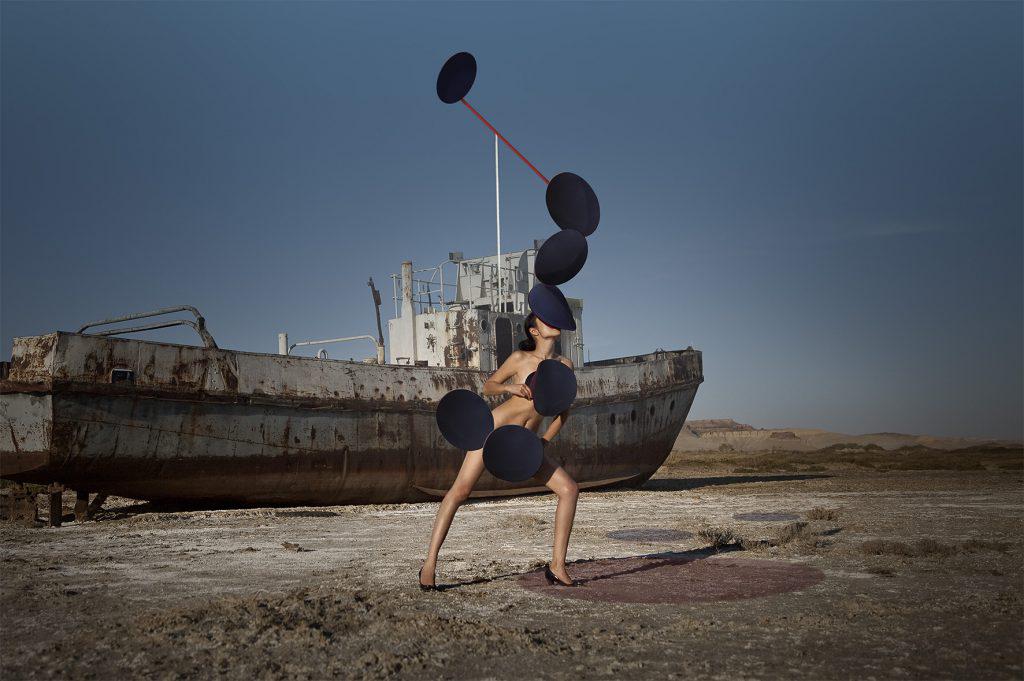
Transoxania Dreams
2011, HD video
Almagul Menlibayeva has been commissioned to create a series of works for the FAW2019 campaign. We are also proud to screen her video Transoxania Dreams (2011). Menlibayeva films mythological narratives placed and staged in the vast landscape of her native Kazakhstan, ravaged by 60 years of Soviet occupation. She leads her audience to the brutally changed region of the Aral Sea where its indigenous people live in the Aralkum, the desert of a once thriving region now entirely devoid of water due to radical Soviet irrigation politics.
The region of Transoxiana (Greek for ‘across the Oxus’) in southwestern Kazakhstan, Uzbekistan and Tajikistan, once the eastern part of the Hellenistic regime under Alexander the Great and the former homeland of the nomadic tribes of Persia and Turan at the banks of the Oxus River, remained an important trade region along the Northern Silk Road with flourishing civilizations and fertile plains for many centuries. Afflicted by former Soviet policies and abandoned by commercial and cultural interests, today, Transoxiana lies bare and stripped in a surreal state of existence with discarded fishing fleets on dusty terrain, ravaged by metal scavengers while its inhabitants look on as the sea keeps receding into a far and unreachable distance of a seemingly better world. Menlibayeva tells the tale of a young fisherman’s daughter who observes the dramatic changes to the landscape of the Aral region and its population through a child’s eyes in a dreamlike mélange of documentary and fantasy. Menlibayeva visually walks the viewer through a vacant landscape and a symbolic dream whereby the girl’s father searches for the remaining sea and new fishing grounds while encountering strange and seductive four-legged female creatures (Centaurs) on his way through the hostile desert. Drawing on the image of the Greek mythological figure of the Centaur, Menlibayeva creates alluring hybrid beings, both sexually charged and bizarre. According to the legend, when the ancient Greeks first encountered the nomads of the Transoxianian Steppes on their horses, they initially believed them to be mythological quadruped, part person part animal, fearing their savage and magical powers. In Transoxiana Dreams Menlibayeva, a pictorial sorceress herself, breeds an eccentric storyline and fantastical imagery extracted deeply from her own atavistic repertoire; leading us visually through an existing, yet unimaginable, landscape in a distant and hypnagogic world.
Almagul Menlibayeva – BIO
Video artist and photographer Almagul Menlibayeva (b. 1969 in Almaty, Kazakh SSR) holds an MFA from the Art and Theatre University of Almaty. She works primarily in multi-channel video, photography and mixed media installation and her work addresses such critical issues of post-Soviet modernity as social, economic, and political, transformations in Central Asia, de-colonial re-imaginings of gender, environmental degradation, and Eurasian nomadic and indigenous cosmologies and mythologies.
In conjunction with her solo exhibition Transformation at the Grand Palais in Paris (France, 2016-2017), she was awarded the prestigious Chevalier Ordre des Arts et des Lettres by the French Minister of Culture in 2017. She was also the Winner of the Main Prize of the International Film Festival Kino Der Kunst (2013) in Munich, Germany. Menlibayeva has gained international recognition by participating in: the Venice Biennale, Italy (2005, 2007, 2009, 2015); Sydney Biennale, Australia (2006, 2012); the Sharjah Biennial, UAE (2010); the Mediterranean Biennale, Israel (2010); the Moscow Biennale, Russia (2011, 2015); the Kiev Biennial, Ukraine (2013); the Daegu Photo Biennale (2016); and the Gangwon International Biennale, South Korea (2018). Selected solo exhibitions include: Videoart at Midnight #98: Almagul Menlibayeva, Berlin (2018); Transformation, Grand Palais, Paris, France (2016-2017); Union of Fire and Water, 56th Venice Biennial, Italy (2015); Transoxiana Dreams, Videozone, Ludwig Forum, Aachen, Germany (2014); An Ode for the Wastelands and Gulags, Kunstraum Innsbruck, Austria (2013); Daughters of Turan, Casal Solleric, Palma De Mallorca, Spain (2012); LATT: Europe at large #6, Museum van Hedendaagse Kunst (M HKA), Antwerp, Belgium (2010); Kissing Totems, Priska C. Juschka Fine Art, New York, USA (2008). Recent selected group exhibitions include: Haifa Museum, Israel (2018); Neues Museum in Nuremberg, Germany (2018, 2016); Astana State Museum, Kazakhstan (2018, 2016); Museum van Hedendaagse Kunst, M HKA, Antwerp, Belgium (2017-2020, 2010); National Museum of Contemporary Art, Athens (EMST), Greece (2017). Almagul Menlibayeva lives and works in Almaty and Berlin.
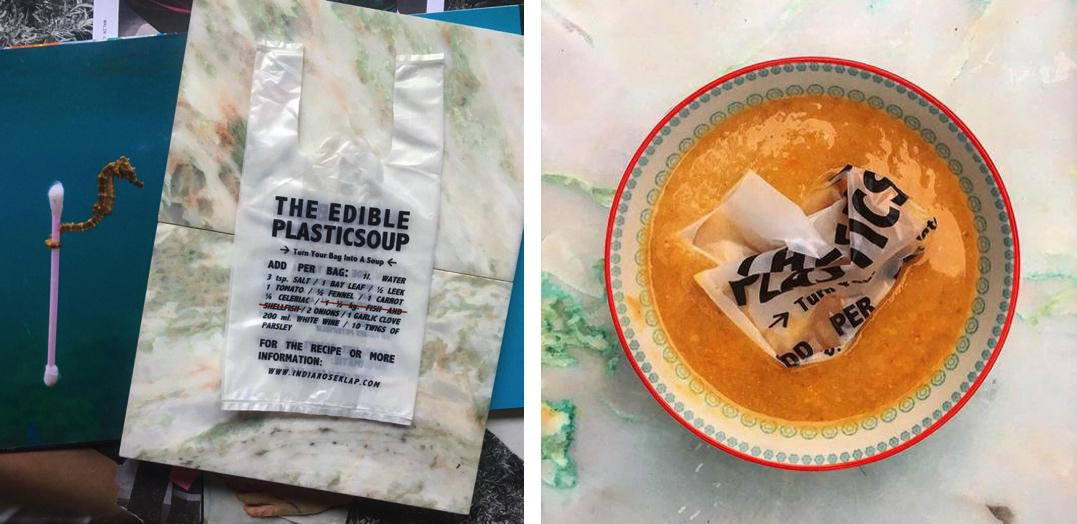
Plastic Soup
Interactive performance
For the opening of Water(Proof0, we invite India Rose to make her Plastic Soup performance, sharing with visitors this most unusual of meals.
The amount of plastic waste that ends up in the ocean is growing at a fast pace. This is not only the waste we throw on the streets, but also the microplastics that remain after washing synthetic clothes or that come from cosmetic products. About 8 million metric tons of plastic waste ends up in the ocean each year, if this doesn’t stop there will be more plastic than fish in the oceans by 2050. To address this problem, India Rose created a recipe for a consumable intervention; a futuristic bouillabaisse; the edible plastic soup. The recipe has been printed upon a bio-plastic bag. The bags are made from cassava, they are 100% biodegradable and they dissolve in warm water. The bags can be used as a binder and garnish for the soup. India Rose makes her edible plastic soup in both fish and vegan versions. To serve the bouillabaisse fish version as sustainably and deliciously as possible, she uses the residual products of fish production; she makes the soup with the fish trimmings and bones. These parts of the fish are usually thrown away, but often contain most of the flavor. The word bouillabaisse comes from the two French verbs: bouillir (to boil) and abaisser (to reduce heat, i.e., simmer), which means that the recipe includes more of a preparation method then a fixed recipe. The bouillabaisse was originally a dish made by fishermen. They prepared the dish on the beach after returning from fishing. In a pot filled with seawater they cooked all the fishes that they couldn’t sell, added some locally available vegetables and herbs. Plastic is harmful to the sea and its inhabitants but a new type of bioplastic might bring the solution. There are a lot of products on the market that are being sold as environment-friendly products. Biodegradable bags sound amazing, but often they leave behind substances that are toxic to both the sea, animals and plants. But bioplastic bags that are made out of cassava and other plant-based materials, those bags are not only biodegradable but also recyclable, they soften in cold water and within months they are converted into carbon dioxide, water and biomass. When they are put in warm water they dissolve. In that way, they are also safe to consume for the inhabitants of our planet.
India Rose Klap – BIO
Being the daughter of a chef, India Rose (b. 1995 in Amsterdam, Netherlands) grew up in a Spanish tapas restaurant. She played with octopuses and crayfish and did afternoon naps in paella pans. From an early age she spent many hours in the kitchen, which is how she grew up with an enormous love for food. With her art projects she tries to make the consumer aware of the problems in the food industry with a real portion of ‘food for thought’. At the same time she wants to reassure the consumer, by providing a series of possible solutions. She bundles all concepts, culinary experiences, and recipes she creates in the utopian manual for the kitchen of tomorrow. An ever growing collection of creations which are far from standard, sometimes not even feasible so far. But they do form the steps towards a better food industry. The utopian manual exists both online and as a printed version. The printed version is made from agricultural waste products and is embedded with seeds. Because of this, the utopian manual can be transformed into a vegetable garden. The utopian manual is filled with many creations; the recipe for the edible plastic soup is one of them. India Rose Klap lives and works in Amsterdam.
 |
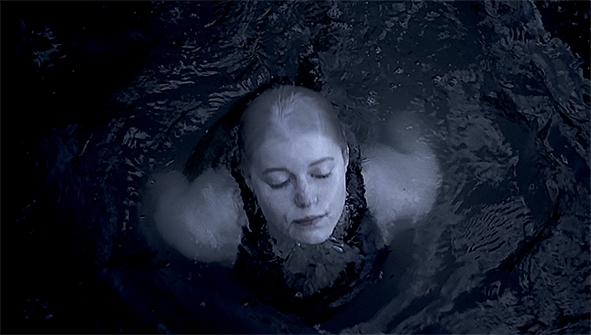
Dark Waters
2018, 4K video, 15’55”
Dark Waters is set in the year 2029. All the oceans are so contaminated with plastic waste that they have become death zones. The only creatures still able to live there are poisonous jellyfish. The government is trying to keep this eco-disaster secret. The film narrates the risky quest for the truth by helicopter pilot Silver Ocean. The movie deals with the social, environmental and political climate of today and our future world. It questions the contemporary roles of female characters and heroes, exploring the relationship between art and the present digital age. The movie story imagines a world where, due to drastic environmental changes, we need to fight for our democratic rights and survival.
Nina E. Schönefeld – BIO
Nina E. Schönefeld (b. 1972 in Berlin) is a multidisciplinary artist based in Berlin. She studied Fine Art in Berlin (UdK) and in London (Royal College of Art). She holds a Master of Arts and a PhD in Art History. Together with Marina Wilde she founded “Last Night In Berlin” a cultural project/blog that documents art openings in Berlin. Schönefeld’s art examines the contemporary social and political climate. Through unusual mediums, objects and videos, the artist questions the contemporary roles of artists, exploring the relationship between art, blockbuster movies and the present digital age. Her stories imagine a dystopian world where, due to drastic political and environmental shift, we need to fight for our democratic rights and survival. Selected recent exhibitions include: ‘Some Demonstrations’, Manifesta/Manifestina, Zurich (2016); solo show at CoGalleries, Berlin (2016); solo show at Fahrbereitschaft, Berlin (2017); Diskurs Gallery, Berlin (2017); Palazzo Ca’ Zanardi, Venice (2018); Goethe Institute, Beijing (2018); BBA Gallery Award Exhibition, Berlin (2018); solo show at Berlinische Galerie, 12 x 12 IBB Video Space (2018); Villa Heike, Berlin (2019); Lage Egal Gallery, Berlin (2019); Mitte Media Festival, Berlin (2019); Made in NY Media Center by IFP, New York (2019); Bamhaus in Luxembourg (2019); Aram Art Museum, Korea (2019).
 |
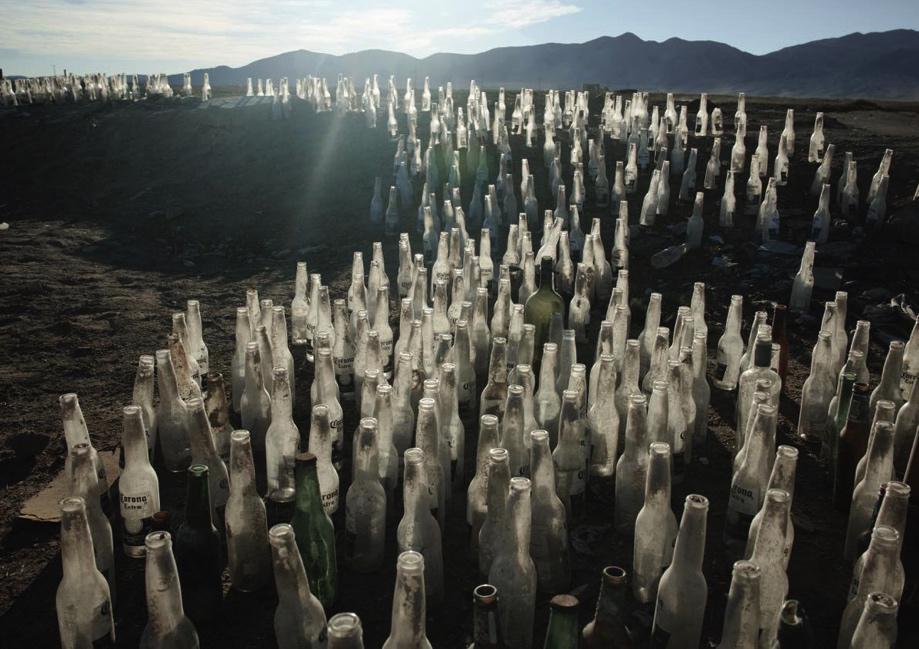
Réprouvé
2018, 4K video, 3’37”
Photographer and video artist Shingo Yoshida finds inspiration in travelling, myths, traditions and the overwhelming beauty of nature. Yoshida considers the world as his studio and therefore a place of constant creation. In his video and photographic works Yoshida expresses his deep reverence for nature and its power, as well as his sense of wonder at encountering new cultures and ways of living. Shot in Calama, Chile, Shingo Yoshida’s film Réprouvé takes us through a garbage-strewn wasteland at the edge of the city, where the artist creates an oasis of beauty, turning discarded bear bottles into a sound installation. In an exhibition about water, Réprouvé is striking for its very absence of water. Creating beauty in the most unlikely of places, it is nevertheless a frightening glimpse of what our planet may soon look like if we do not take better care of our most necessary natural resource – water.
Shingo Yoshida – BIO
Shingo Yoshida, born in 1974 in Tokyo, and currently lives and works in Berlin. Yoshida received his MA with highest honors from Ecole Nationale Supérieure d’Art, Villa Arson in Nice France in 2004. In 2005 he earned a post-graduate diploma at the Ecole Nationale Supérieure des Beaux-Arts de Lyon, France, and subsequently in 2007 he received another post-graduate diploma in the Program La Seine of Ecole Nationale Supérieure des Beaux- Arts de Paris. in 2013 Yoshida completed the prestigious international artist residencies at Villa Arson Nice France – Centre National d’Art Contemporain, and was awarded the Fellowship of Overseas Study Programme for Artists by the Agency for Cultural Affairs of the Japanese Government. Yoshida’s work has been shown in many international exhibitions, including: Palais de Tokyo, Paris (2007, 2012); the Museo de Arte Contemporáneo MAC, Santiago, Chile (2012); the 60th International Short Film Festival Oberhausen, Germany, (2014); Videoart at Midnight #67: Shingo Yoshida, BABYLON, Berlin (2015); POLARIZED! Vision Competition Winner, Lapland, Rovaniemi, Finland (2015); Gunma Museum of Art, Tatebayashi, Gunma, Japan (2016); Mulliqi Prize, National Gallery of Arts, Prishtina, Kosovo (2016); Instituto Zappa (Accademia Di Brera) Viale Marche, Milan, Italy (2016); Onufri International Prize, National Gallery of Arts, Tirana (2016); IkonoTV (2017). In 2016 Shingo Yoshida’s works entered into the following Collections in Berlin: Berlinische Galerie, Akademie der Künste, and Fluentum.
 |
ACADEMIC PARTNERS
Members of Mathilde ter Heijne’s class for Time-Based Media and Performance at
UdK (Universität der Künste, Berlin)
For FAW 2019 we are cooperating with Mathilde ter Heijne’s class at the UdK to create a performance program focused on the issues addressed by this edition of FAW, namely sustainable practices in consumption, conservation, and distribution of water, and how this intrinsically ties in to how we eat and how we live
PARTICIPATING ARTISTS
HALÉKÉ collective
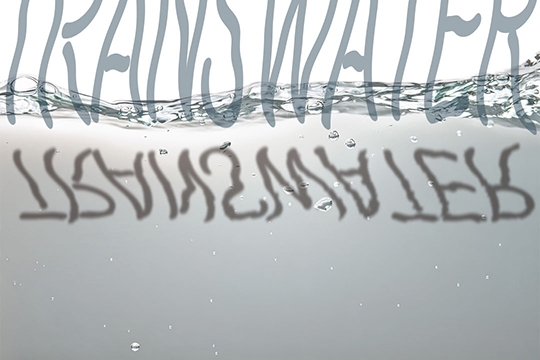
Transwater
2019, Live Performance
Celebrate water, celebrate together! Transwater is a ceremony for water. The water we drink and clean ourselves with is transparent and tasteless to our eyes and tongue. According to the researches by Masaru Emoto, water is able to respond and feel the human’s emotions. The water crystals will change their shapes from ugly to beautiful, depending on the nature of speech or thoughts. There will be three types of brainwashed water for the tasting in the ceremony: Good water, bad water and ignored water. The Good water is treated with compliments and beautiful sentences. The bad water got harassed and violated with insults, while the ignored water got left neglected. Will the taste of the water be changed by the way humans treats it? Or does the human mind change the taste of water? The transwater will run through your body with its emotion and memory.
HALÉKÉ collective
(Aki Nakamura, Anastasia Putsykina and Sugano Matsusaki)
HALÉKÉ collective was formed in 2019 in Berlin by Aki Nakamura (1990, b. Japan), Anastasia Putsykina (1994, b. Russia) and Sugano Matsusaki (1992, b. Japan). Aki studied scenography drama and film at the Tama Art University in Tokyo (BA), Sugano studied sociology and anthropology at the Keio University in Tokyo (BA) and currently she and Anastasia are studying fine arts in Berlin at the University of the Arts with Prof. Mathilde ter Heijne. HALÉKÉ focuses on the rituality of food and the performativity of eating. The codes and choreographed customs and manners that circulate around the way people cook, eat and consume food tend to change their meaning depending on the context, in which they are performed. Theses changes will be addressed in performances and interventions by HALÉKÉ.
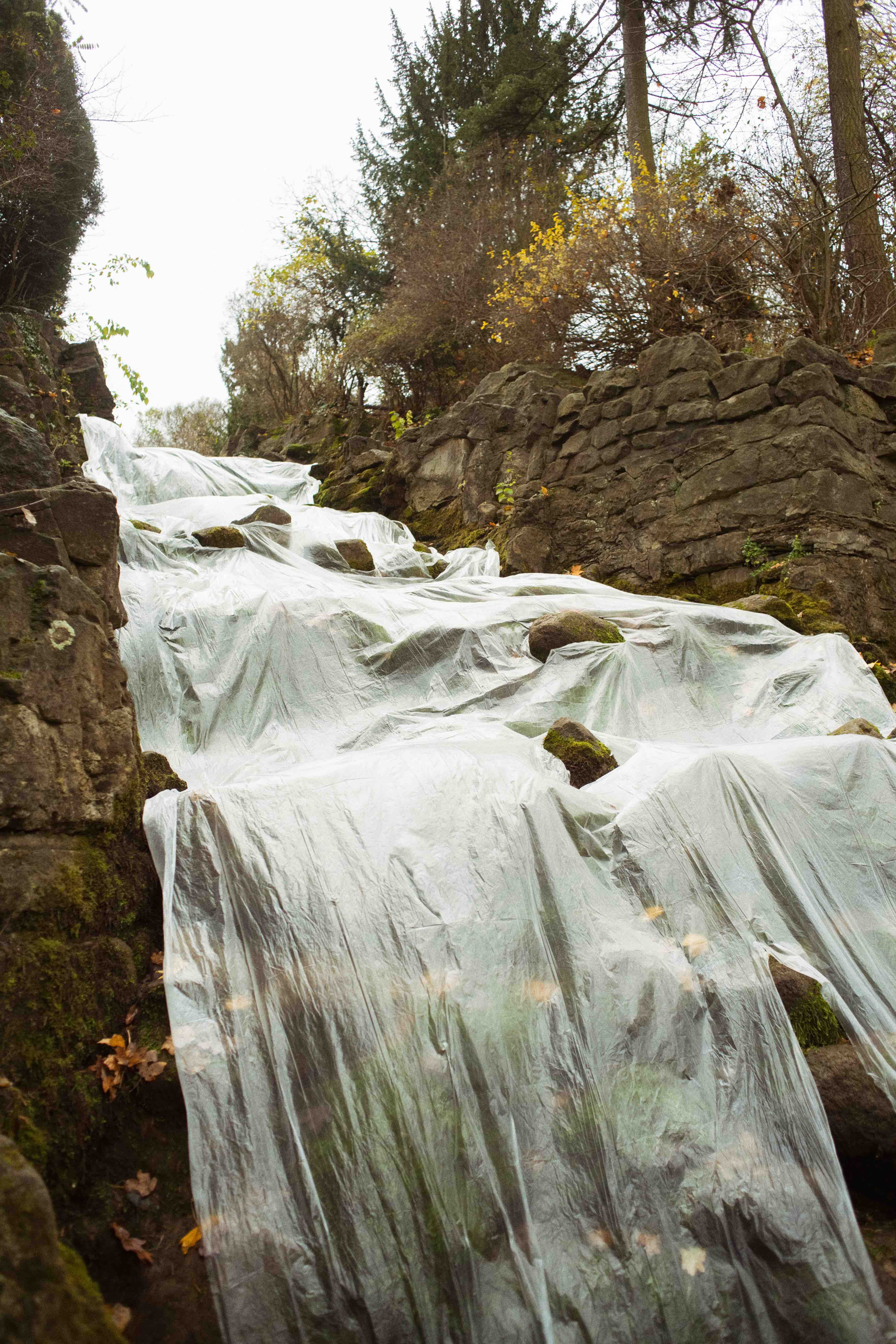
Imitation
2017, Photographs
What does the human create? How does it affect nature? How does nature affect the human? How are their relationships built? Where is the line between human and nature? Where is the line between the artificial and the natural? As part of the project Research of the natural and artificial the intervention in the mock waterfall in Berlin’s Victoria Park is looking for answers to all of these questions. In this work Joanna was inspired by visual similarities between the natural and the artificial, between water and cellophane and by the waterfall in the park itself, which is itself imitating a mountain landscape. She created a space where two artificial things meet each other and simulate nature.
Joanna Keler – BIO
After moving in 2017 from St.Petersburg to Berlin Joanna Keler (b. 1988 in Gus-Khrustalnyi, USSR) is attending the Berlin University of the Arts in the Class for Performance and Time Based Media. Through various media she researches society relationships and works with the topic of politics, migration and influence of digital media. Most important for Joanna Keler is the spectator, because she strongly believes that communication and participation with and through art endows the viewer with experience, which itself is the first step on the way to changes.
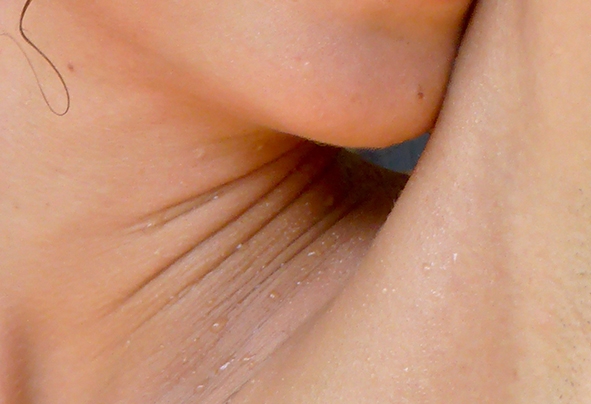
SWEATONIC
2019, Live Performance
In a late capitalist society where water has long become a tradable commodity global warming drives people to new business ideas. While temperatures are rising dramatically and the little remaining fresh water is in high demand sweat becomes a valuable resource. A fluid naturally produced by the body consisting of 99% water, full of electrolytes, some sugar and amino acids gets recycled and transformed into a product that revolutionizes the cooling supply for the human organism. SWEATONIC. In this performance the visitors will have the chance to witness the first transformation process before the product launch. By donating their own sweat they can become active protectors of the human cooling system in times of climate change. Don’t waste those valuable components if they can be processed and returned to the body – become part of the SWEATONIC movement!
Klara Kirsch – BIO
Klara Kirsch was born in Speyer in 1995. After working on an organic farm in Japan she started studying at the University of Fine Arts Berlin (UdK) in 2015 where she joined the classes of Jimmy Robert and Ming Wong. In 2017 she studied at Emily Carr University of Art and Design Vancouver for one semester. Since 2018 she has been in Mathilde ter Heijne’s class for performance and time based media.
Gabriela Lesmes
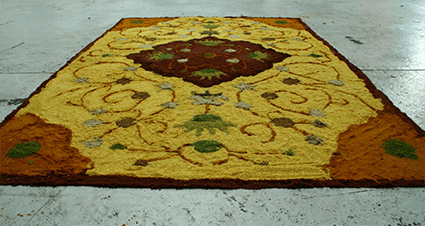
Migraciones
2019, Installation: dehydrated and pulverised orange peel,
lemon peel, red roses
Migraciones is a piece where different edible elements have been dehydrated and pulverised. Is a piece a where a decision has to be made for it to either mutate or keep its form.
Gabriela Lesmes – BIO
Gabriela Lesmes (1991, Bogotá, Colombia) Is a Berlin based artist. She studied Stage Design in Colombia and she’s currently studying Sculpture at the Kunsthochschule Weissensee Berlin. Although her practice is not limited to one discipline she mainly works with installation, collage, drawing and sculpture all of them are flirtations between knowledge and sensitivity.
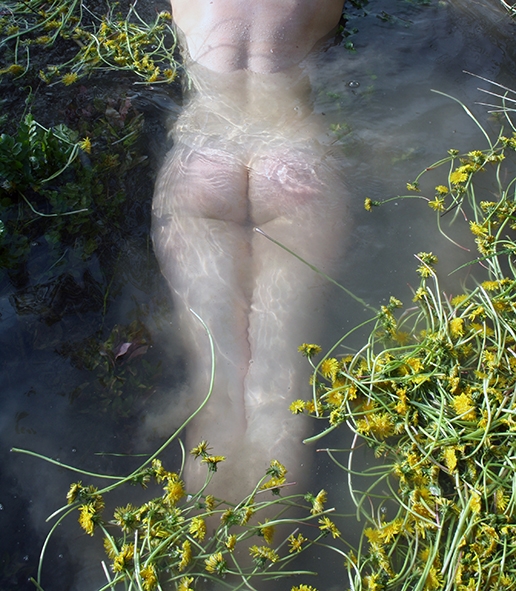
Stay Hydrated xox
2019, Video Diary
The human body is around 70% water! So is the earth surface! Coincidence? Maybe not! How often do you water your body insides? Of the 2 litres of liquid that I consume daily, maybe only 30% are pure H2O. The rest comes as coffee, tea, juice and beer,which makes me happy in the moment but gives my body all sorts of extra stimulation and processing work. For the month of August, I want to find out if (my) life is possible on the base of water – pure and untreated as it comes off the grounds and where to find it. I will share my process of water-infused and water seeking living on social media and invite you all to join me on the journey.
Lotti Seebeck – BIO
Lotti Seebeck’s work circles around community activation through conversation, skill and knowledge sharing and body-world exploration. She has lived, worked and studied in Hildesheim and London and recently joined the class for performance and time based media at UdK Berlin.
https://woym.de
https://lottiseebeck.wordpress.com
Students of the University of Gastronomic Sciences (Pollenzo, Italy), in the Master of Gastronomy: Creativity, Ecology,
and Education Program
The the University of Gastronomic Sciences (UNISG) was founded in 2004 with a focus on a holistic and interdisciplinary approach to food and sustainability. It was founded by the Slow Food movement, in the area where this movement began. The different programs host students from all over the world and various lecturers, such as academics, farmers, food producers, artists, and many others. For FAW2019 Tainá Guedes developed a project with members of the Master of Gastronomy: Creativity, Ecology, and Education program at UNISG.
PARTICIPATING ARTISTS
Giovanni Giorgi,
Nuha Saegh & Nuwella
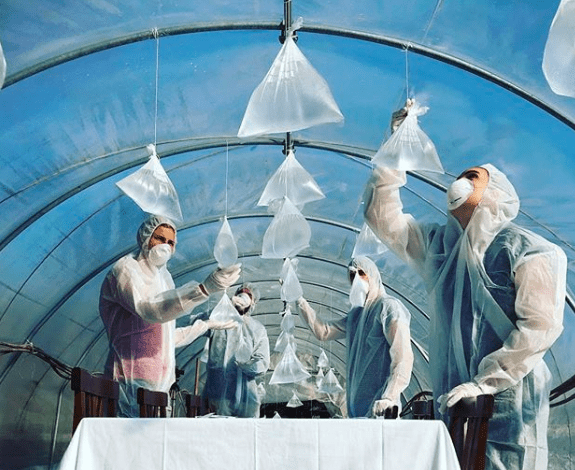
Unfiltered
2019, Live Performance
This performance talks about the impact of pesticides on people’s health and environment. We usually think of pesticides only as something that is contained in food and we tend to forget about fact that water gathers these substances in fields and makes them circulate.
Still, we hear from many scientists that the water that we drink or use is cleared out from pesticides and that it contains only a small and non-harmful amount. Unfortunately, this solution does not erase the many issues that are connected to the use of certain kinds of pesticides and, more broadly, to our food production: there are many health problems concerning the use of pesticides, especially for humans or for other natural species that are staying in direct contact with them, right in the fields where they are sprayed; these issues include different types of cancers, infertility, malformations, and animal migrations that change the local ecological balance.
The students of UNISG (Pollenzo, Italy), Master of Gastronomy: Creativity, Ecology, and Education, will perform a piece called “unfiltered” to raise awareness on the existence of these problems in those areas where these are “not filtered” from water, as it instead happens for the one people consume in many urban spaces, for example. The information concerning these problems will be directly revealed on what constitute a direct target for pesticides and a system for which we all usually feel a lot of concern: the human body. The performance will include a pesticide-sprayer person and one “unfiltered body”, to be observed by the audience and that will communicate to them the problems related to this current reality.
Concept:
Giovanni Giorgi (from Prato, Italy; student at UNISG)
Performing artists:
Nuha Saegh (from Aleppo, Syria; student at UNISG);
Nuwella (Kenya/Canada/Berlin; Founder of “Ó Water”)
Giovanni Giorgi
Born in Florence in 1995 and grown up in Prato, Italy, his background is in gastronomy; after undergoing the undergraduate degree at UNISG and approaching the world of food journalism, his interest in creating narratives and exploring different dimensions of how food can make the world more sustainable, he decided to apply to the Master of Gastronomy: Creativity, Ecology, and Education at UNISG to discover how art can be a powerful key for conveying narrations and for community building. He is currently working as a design intern at Food Art Week.
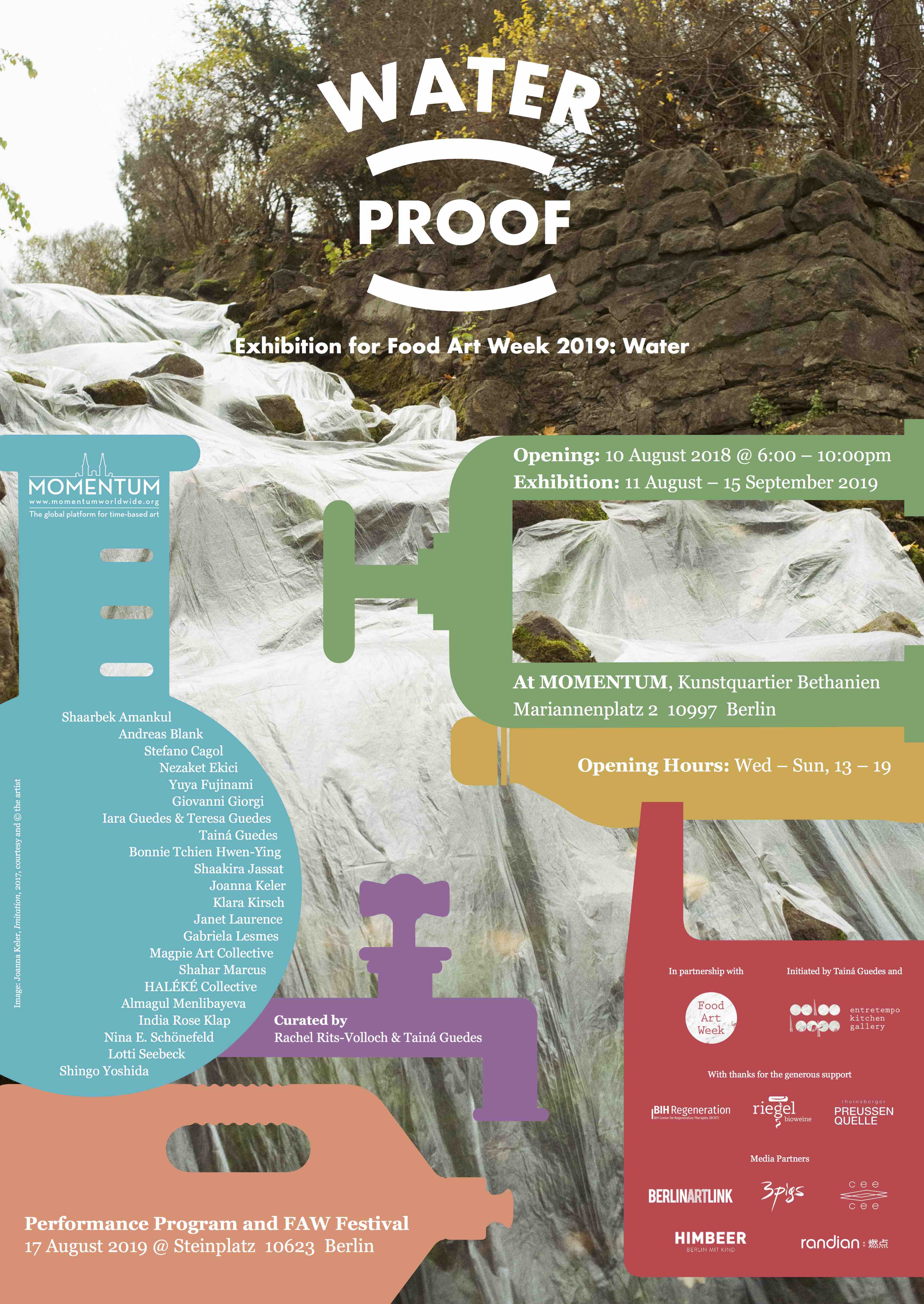
IN PARTNERSHIP WITH
Initiated by Tainá Guedes and
WITH THANKS FOR GENEROUS SUPPORT
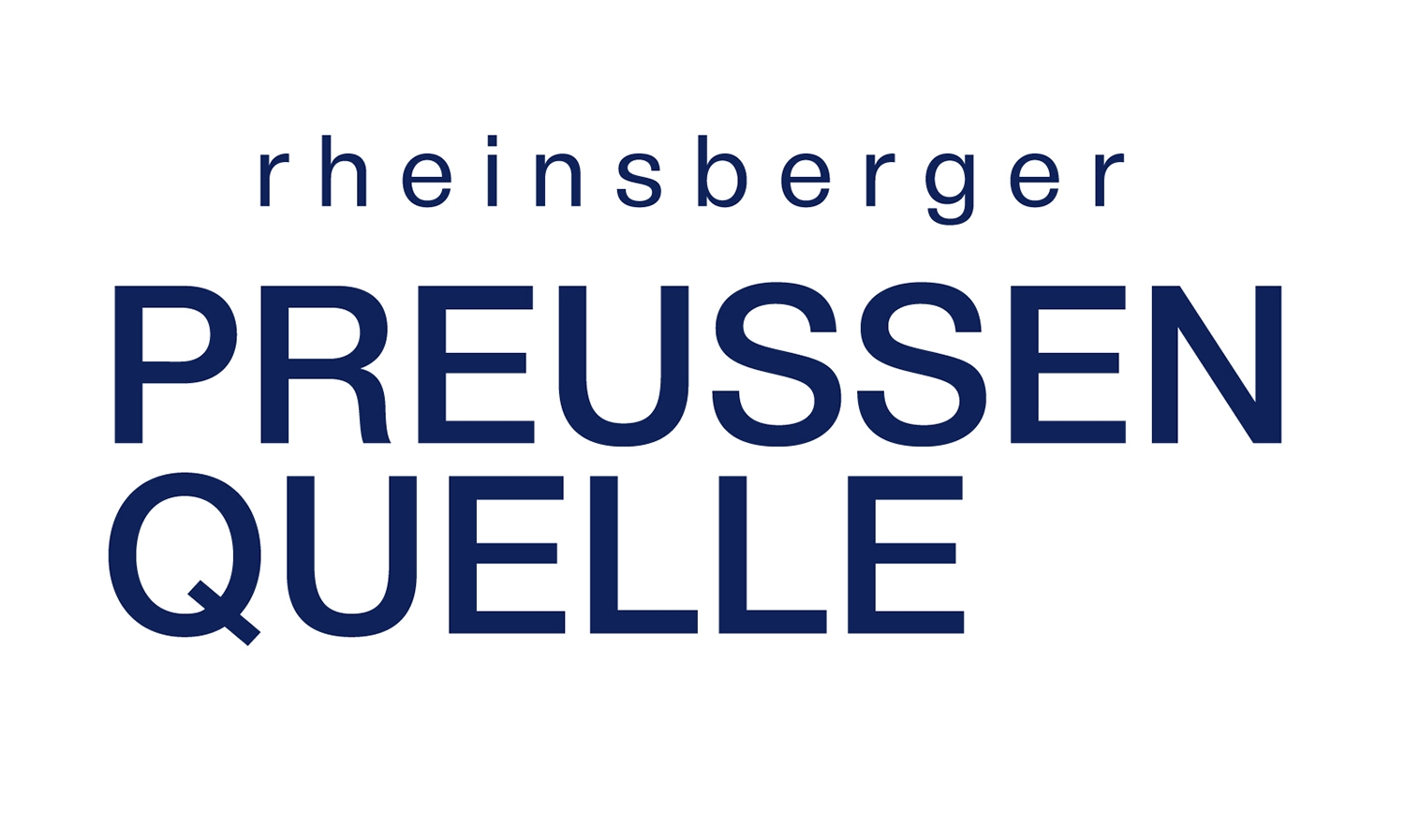 |
WITH THANKS TO OUR MEDIA PARTNERS
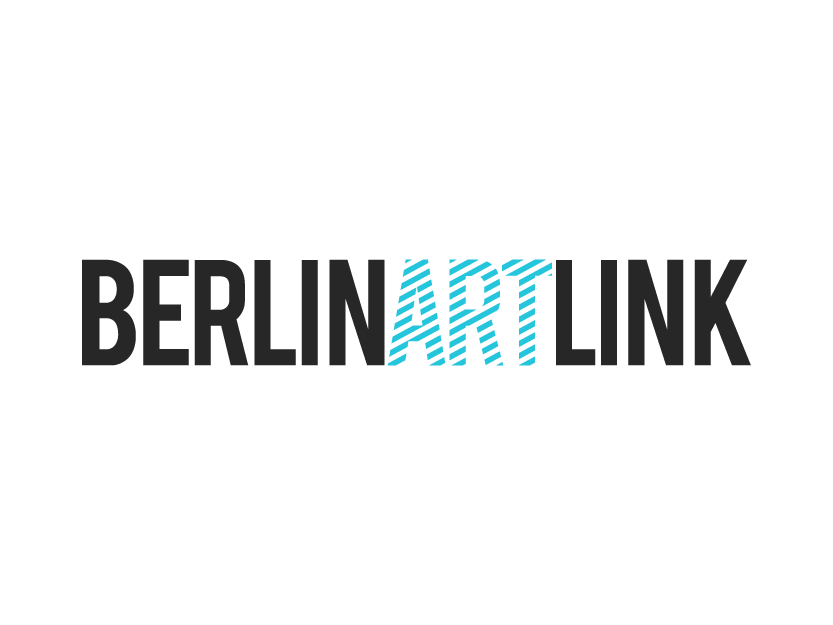 |
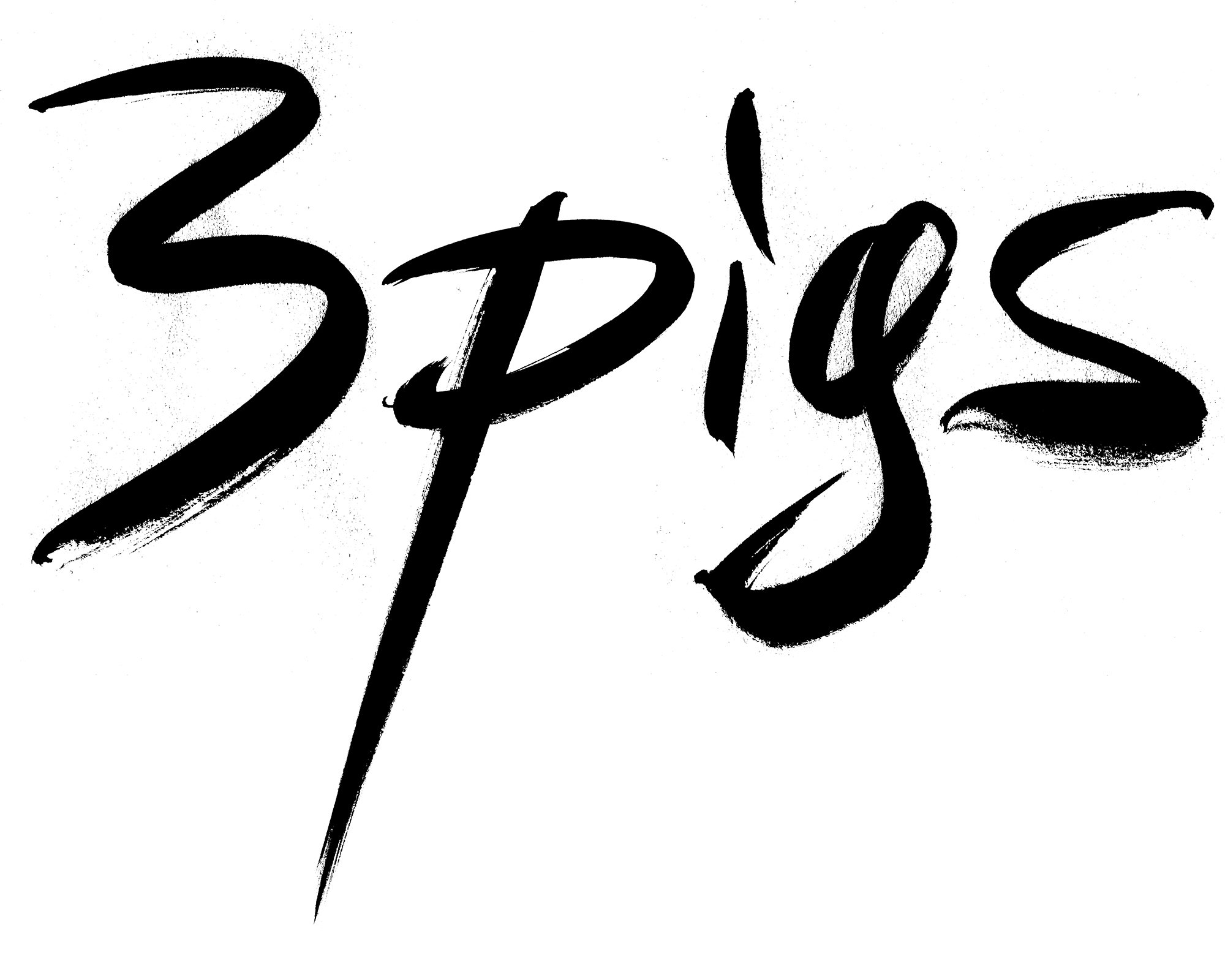 |
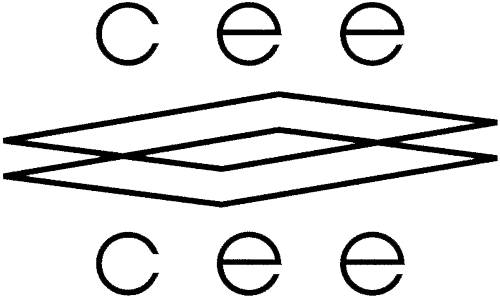 |
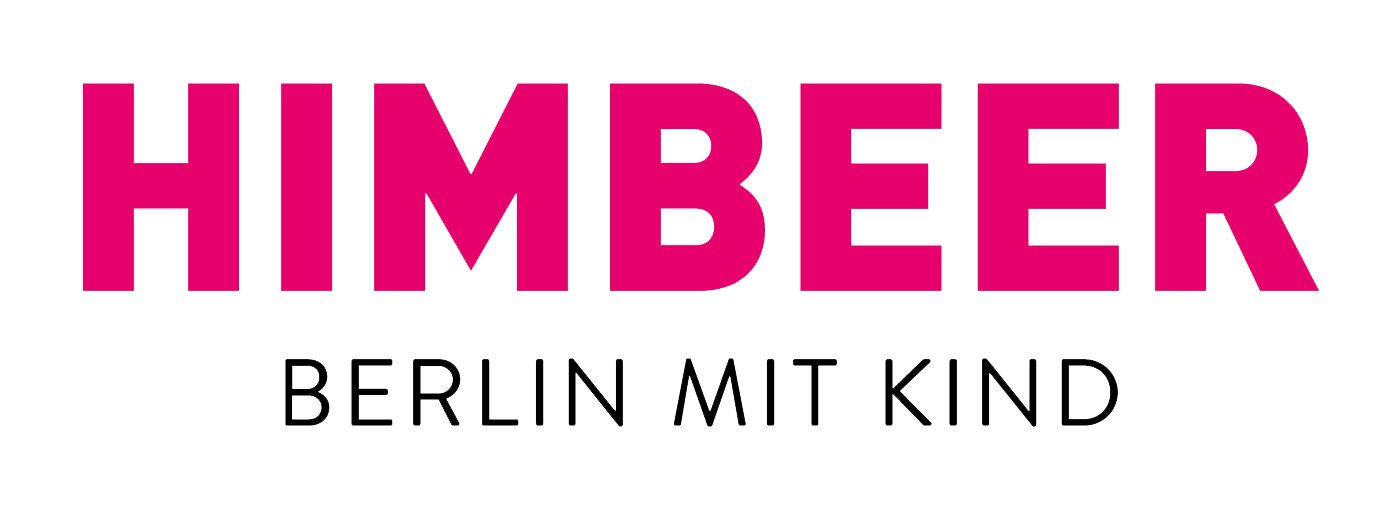 |
 |
OPENING PHOTOS


 Back to Homepage
Back to Homepage

